Driving from Yugawara to Hakone proper today, up some beautiful winding mountain roads. I noticed from my last trip to Japan that when you’re out and about in a car, and you encounter gorgeous scenery, there are rarely places to pull over and enjoy the view. In Australia, lookouts seem to be everywhere there’s even a slight elevation in the road, along with some big board of information to tell you what you are looking at. Here they seem very few and far between.
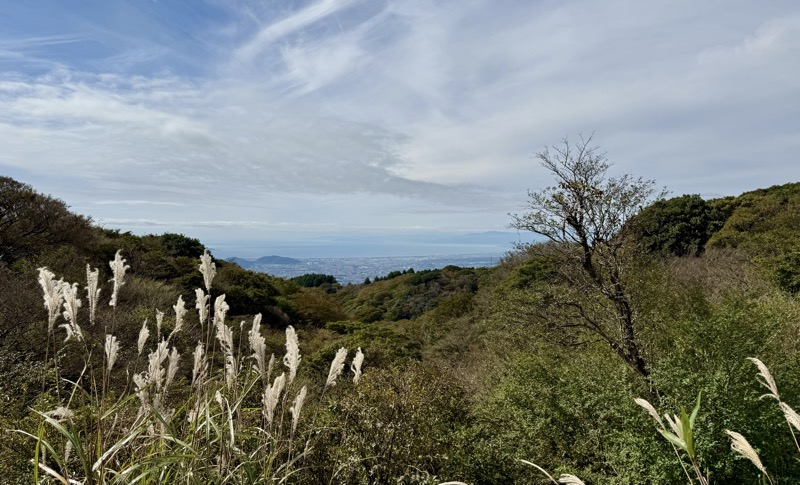
Looking back towards Tokyo.
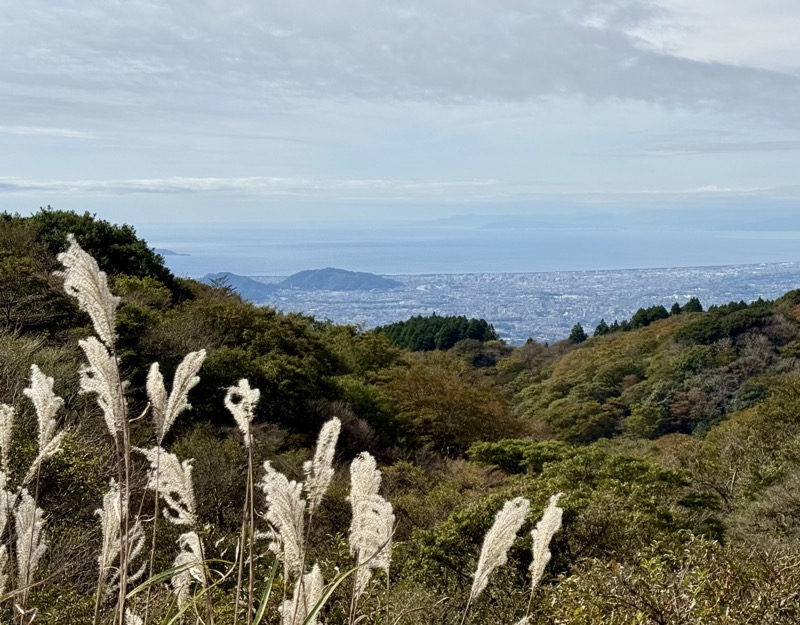
The elusive Mt Fuji! Sadly, without any snow on top… apparently it’s the first time in 130 years there has been no snow on Mt Fuji in October. Signs of rapid climate change are all around us. The hovering low cloud is reminiscent of so many iconic Japanese prints and artworks.
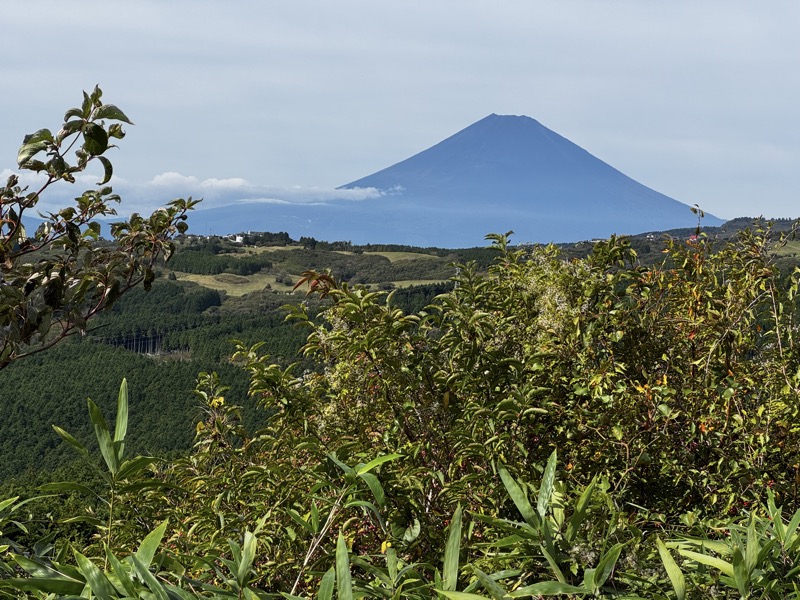
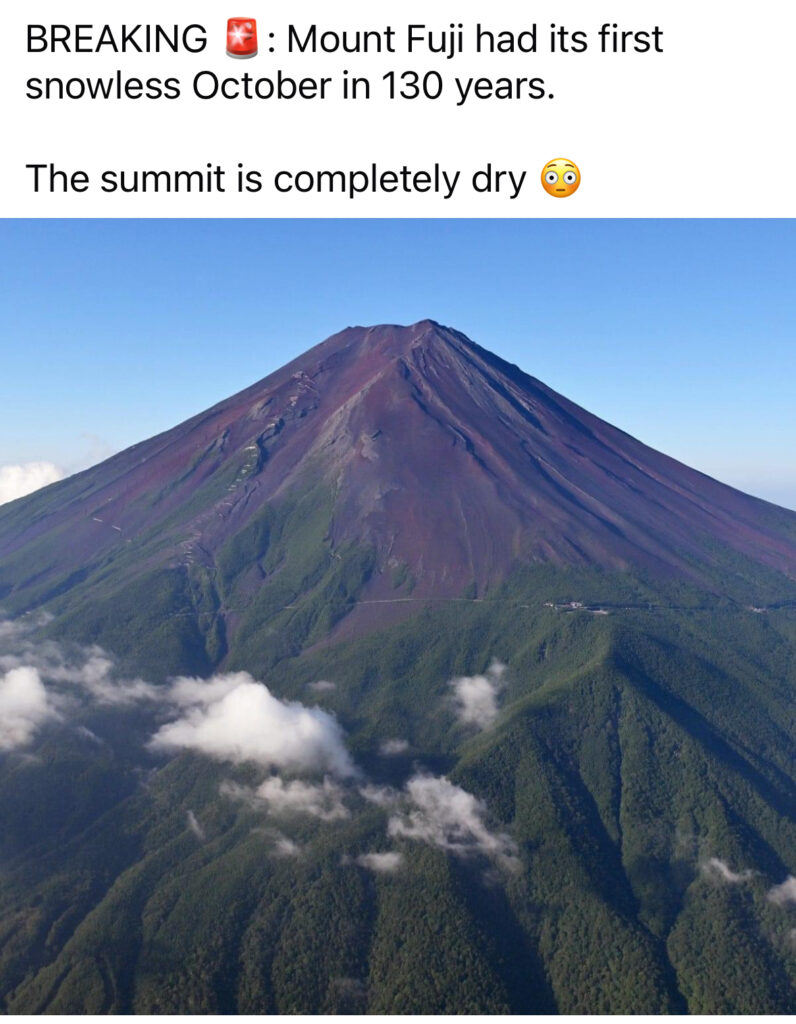
These guys pulled up in their car and at first I was like, ‘Hey! Way to block the view!’, but they have a cute little K-car so we forgive them.

When we arrived in Hakone, we did a quick scout out of the Hakone Checkpoint area. The Hakone Checkpoint was originally an inspection facility during the Edo period (1603-1868) and was dedicated to keeping the city of Edo (Tokyo as was) safe. There were up to 50 checkpoints scattering across the country during this era but most were abandoned when the Edo Period ended. From what I’ve read the Hakone Checkpoint is the only one that has been restored. It was rebuilt and renovated in 2007, using the traditional building tools and techniques from the Edo Period. I am planning on coming back this way in a couple of weeks to visit the site – but so not going near it on a public holiday weekend!

The little shopping street leading up the Checkpoint has many craftsman who create the traditional ‘Yosegi Zaiku’ workwork that has its origins in the mountains of Hakone. The craft has hundreds of years of history and is designated as a special Japanese cultural treasure, and utilises naturally different coloured timber laid out in intricate geometrical designs and patterns to make complex and beautiful timber products.
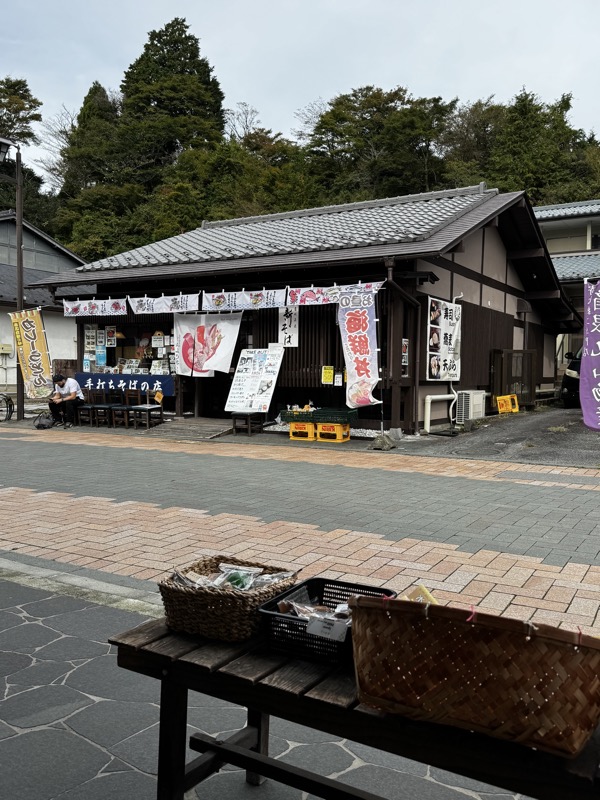
Hakone Karakuri Musuem – showcases the techniques used to make the Yozegi Zaiku masterpieces. There is a small museum which displays how the history of the techniques date back to the Edo period, and it was as much as 1000 years ago that local craftsmen began to gather in Hakone to take advantage of the wide varieties of wood available in the mountains here. Initially, the timbers were used to create furniture, but around 200 years ago a noted craftsman named Jinbei Ishikawa developed a technique of co-mingling different colours and grains of woods to make boards and then cut them into thin slices of timber veneer. These thin boards containing the intricate designs are then glued to various boxes, trays, coasters and what have you, to create these beautiful marquetry pieces.

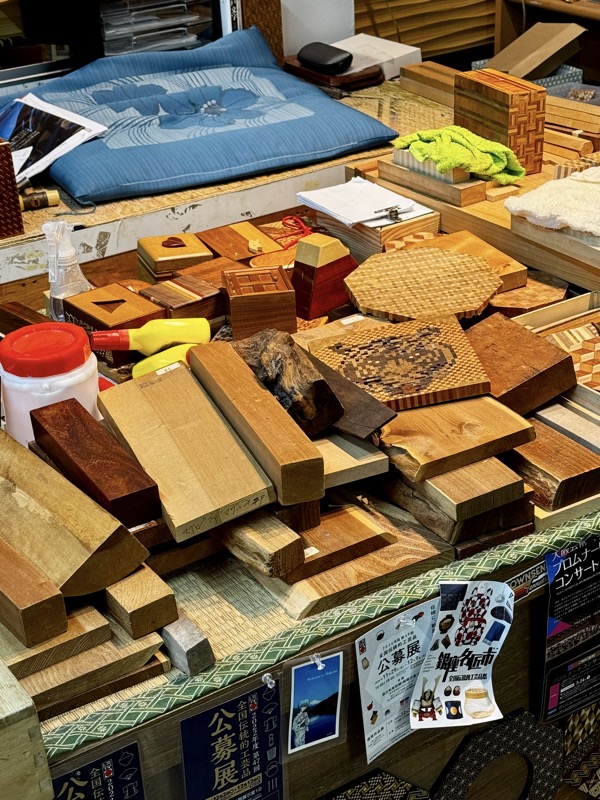
Planes used to create the thin slices of timber decorations.
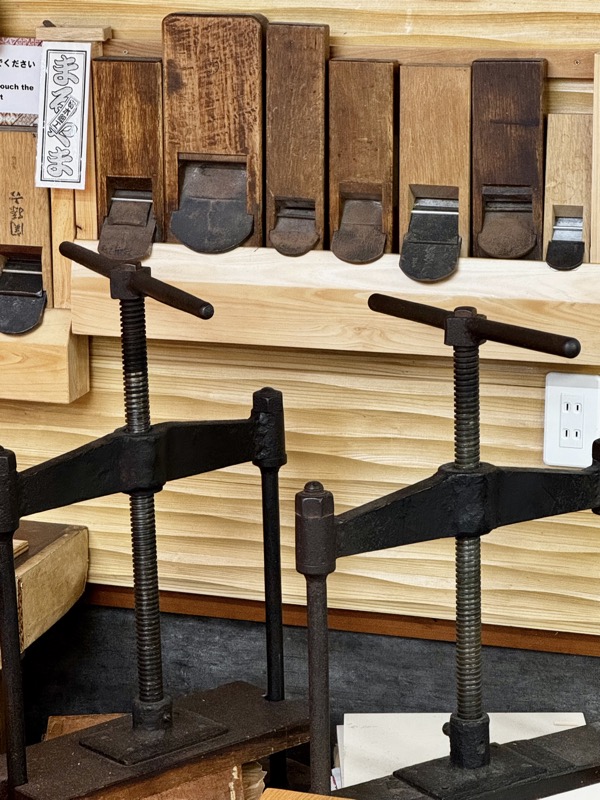
The work is so beautiful, and showcases some serious woodworking talent.
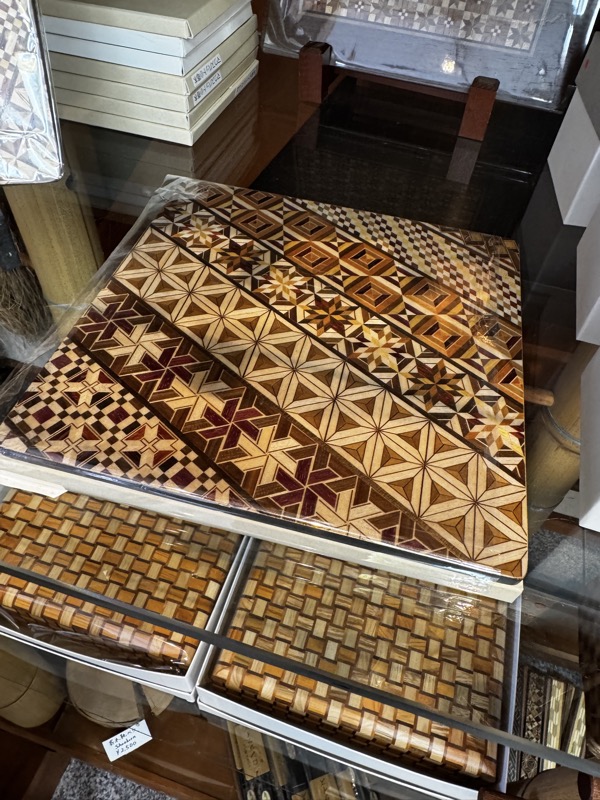
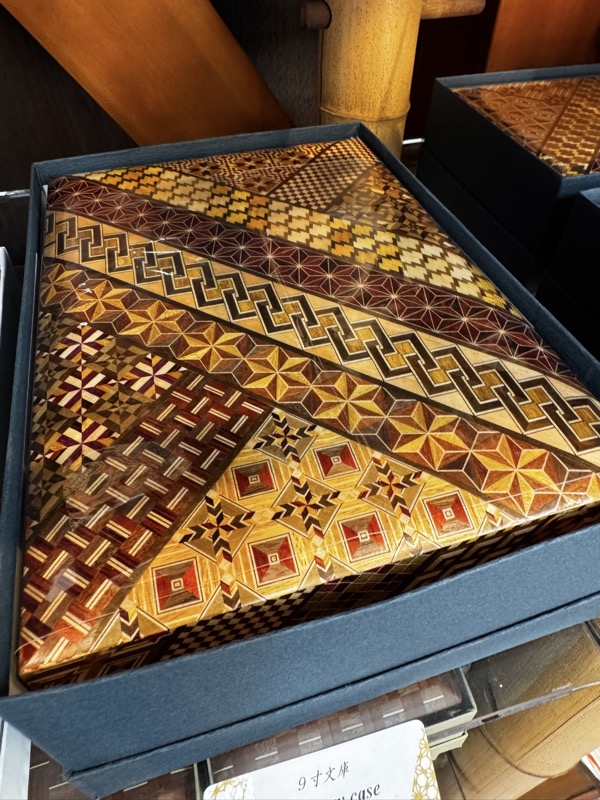
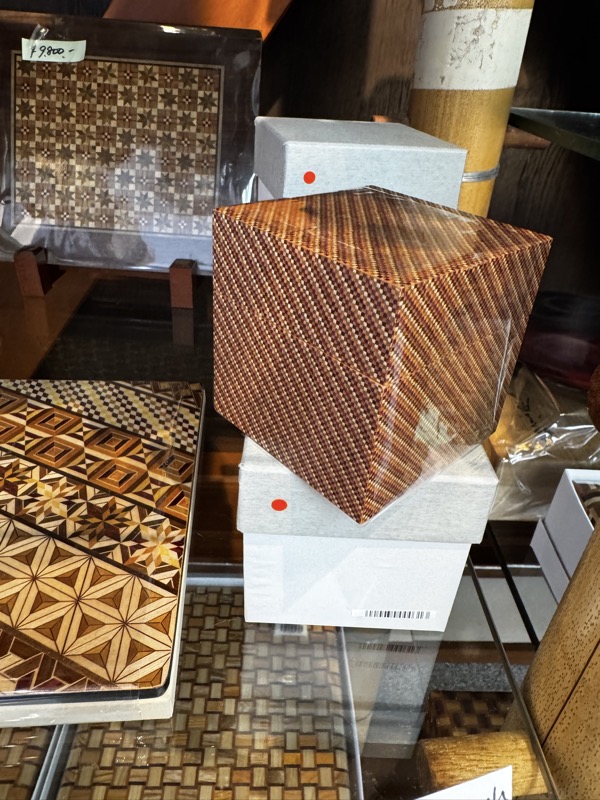
After checking out the marquetry and resisting buying anything to carry around for the rest of the trip, we sought out something fishy for lunch. We found a sushi restaurant near the Checkpoint, called Daimasa Honten. It was rated 4.2 on the Googles, which is damn near impossible in Japan. The Japanese are notoriously harsh on rating restaurants, they will never complain about food they are served, but they have very high standards and seem to often feel, ‘things can always be better!’ Which seems to sit with the Japanese ideals of perfectionism quite nicely. Anyway, if you’re in Tokyo and see a restaurant with over 4 stars aggregate reviews on Google, just know that’s damn near impossible – and you should go there, the food will be amazing. This place however, could just be lucky enough to have lots of western tourists visiting who are more free and easy with their praise!

I chose a unagi and tuna rice bowl, that is supposed to look like a dragon.. and while the picture on the menu was sort of dragon like if you squint at it from the right – mind did not! 😀
Nevermind though, it was super fresh and really tasty. So all is good with the world.
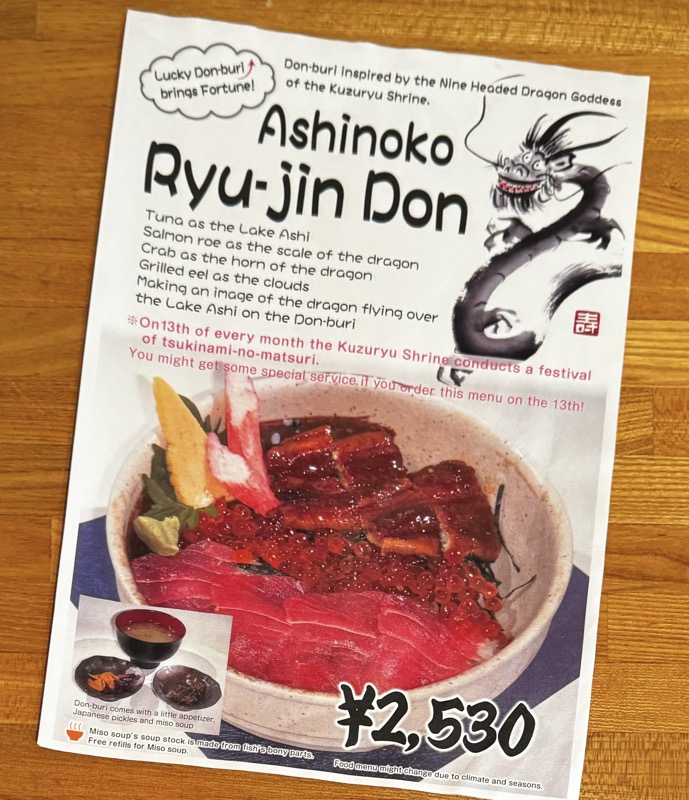

Yale ordered a donburi set full of all good things. All up, a delicious meal and for a fairly reasonable price (compared to what we would pay for similar in Australia, though admittedly kinda touristy priced for Japan).
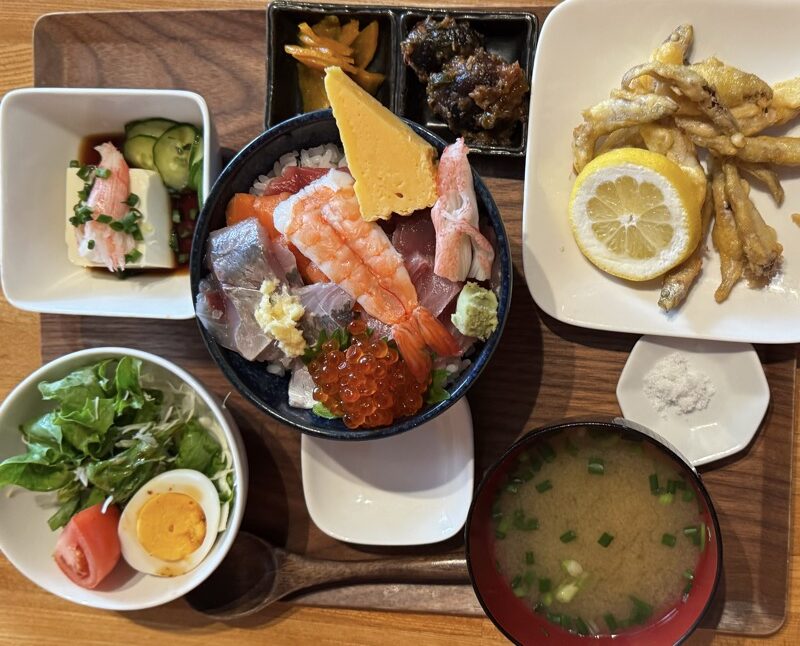
After lunch, we took a drive to get to Kitanozake Saryou, and made a quick detour to a photo point on a small side road near the “Old Tokaidō ROad, Ancient Cedar Avenue”. We managed to get some beautiful views of Lake Ashi towards the famous Hakone Tori Gate, and Mt Fuji in the background. As luck would have it, one of the very touristy and famous pirate ships was coming past and made for some beautiful iconic Japanese photos.
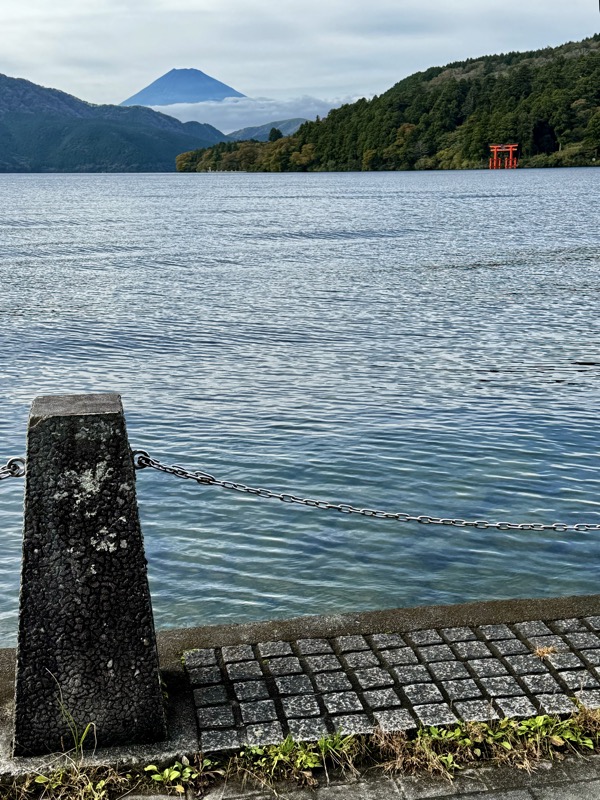
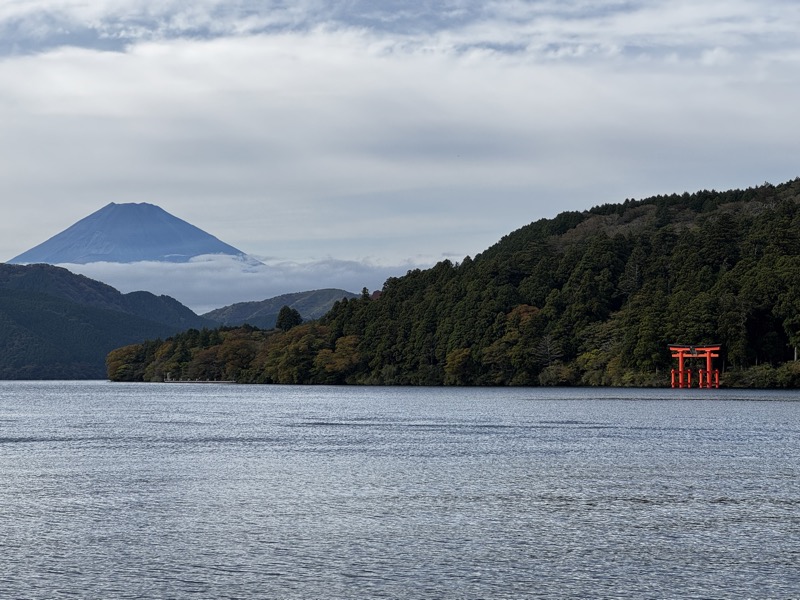
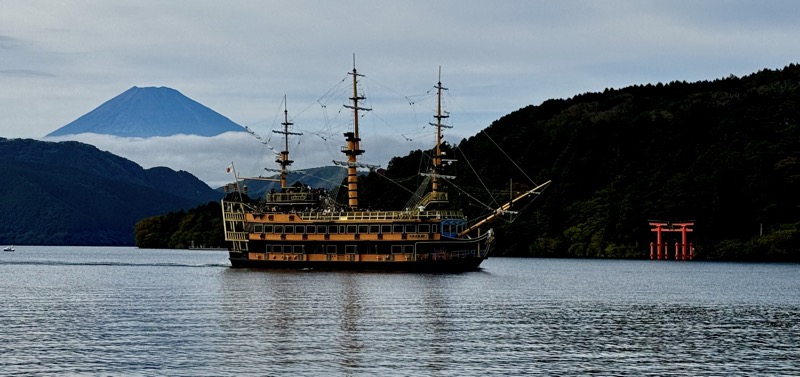
Togendai Station – where the ships come in.

Had to do a quick stop at the konbini for some saké… and I’m always amused at the strangeness available at the local shop. Spam nigiri? Hotdog in a bun complete with ketchup and mustard, and how long has that been sitting in that bag? Yikes!

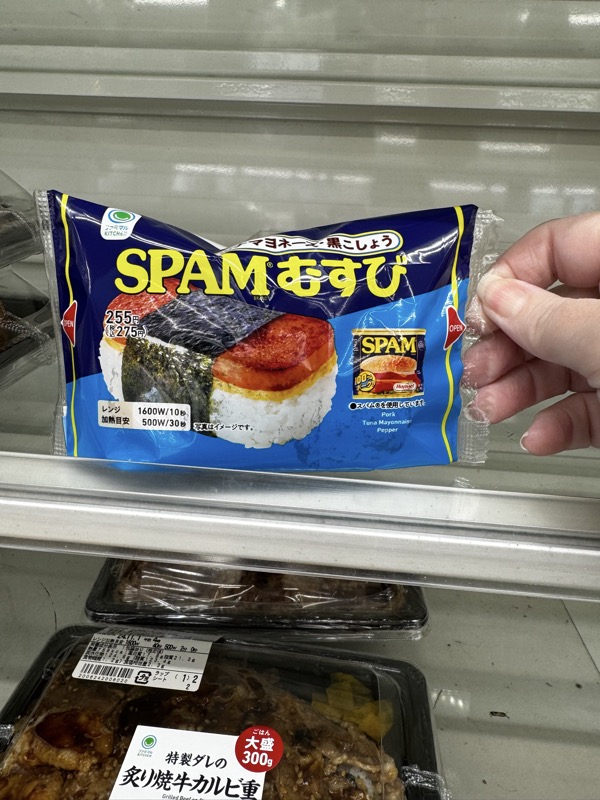
Yale found this enormous chocolate waffle ice cream monstrosity… don’t let the Yale for scale throw you off, this thing was easily as big as my hand!
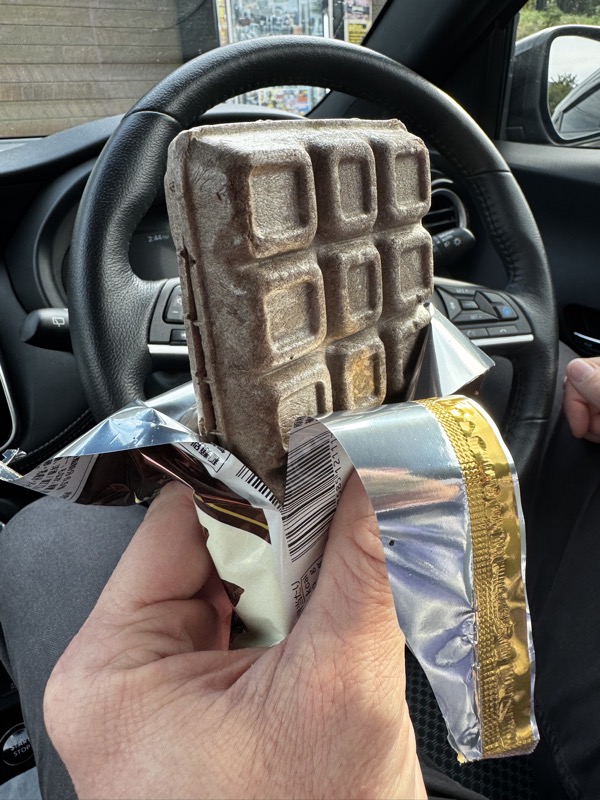

While in the area for a few days, we took the opportunity to visit the Hakone Venetian Glass Musuem also known as the Hakone Glass Forest or the Ukai. It is located in Sengokuhara in the Ashigarashimo District and I thought the idea of a Venetian glass museum in Japan was going to be something seriously odd… and well, I always love me a bit of absurdity in the morning.



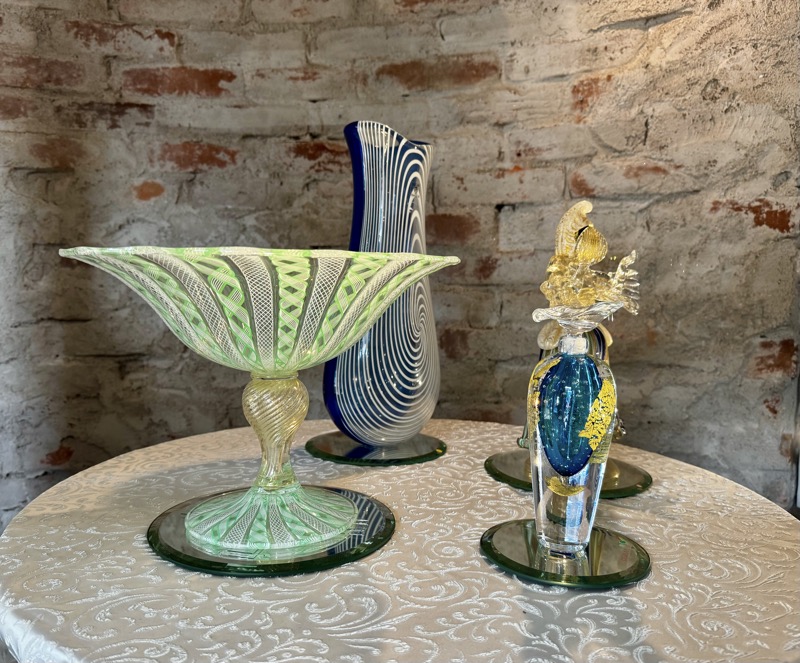
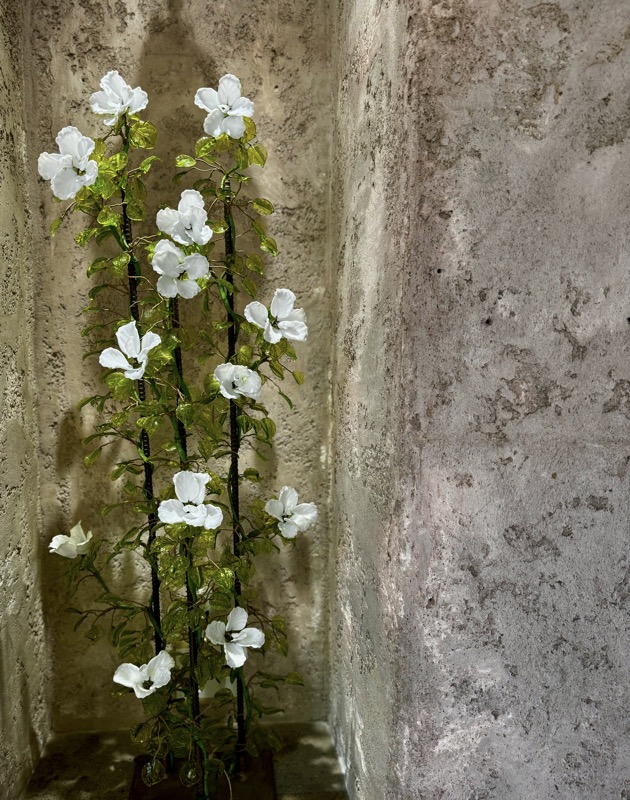
And all these objects are before you even enter.
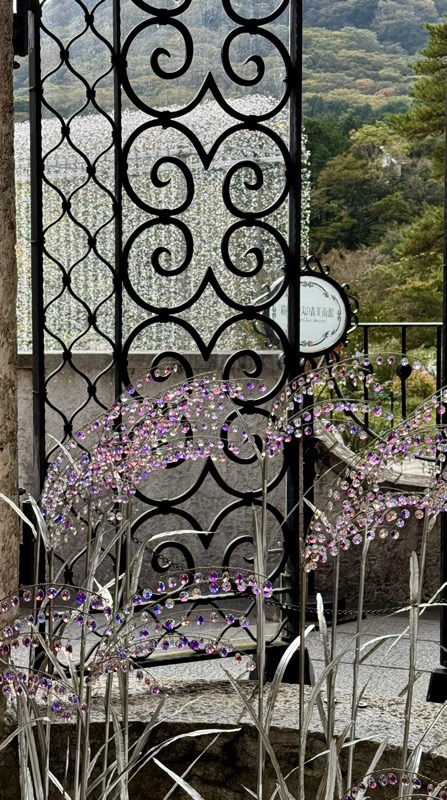
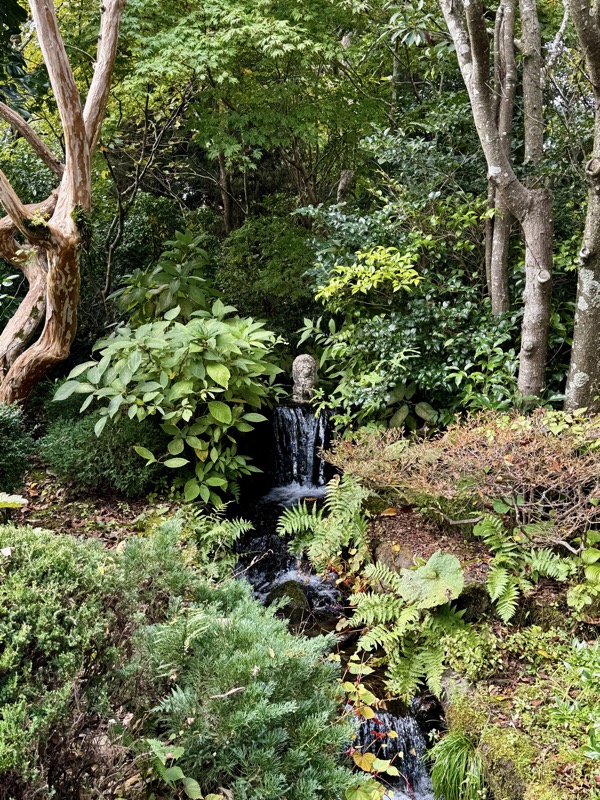
This is an Insta-famous archway is made entirely of crystals. It is quite striking when the sun hits it, but today it was quite overcast.
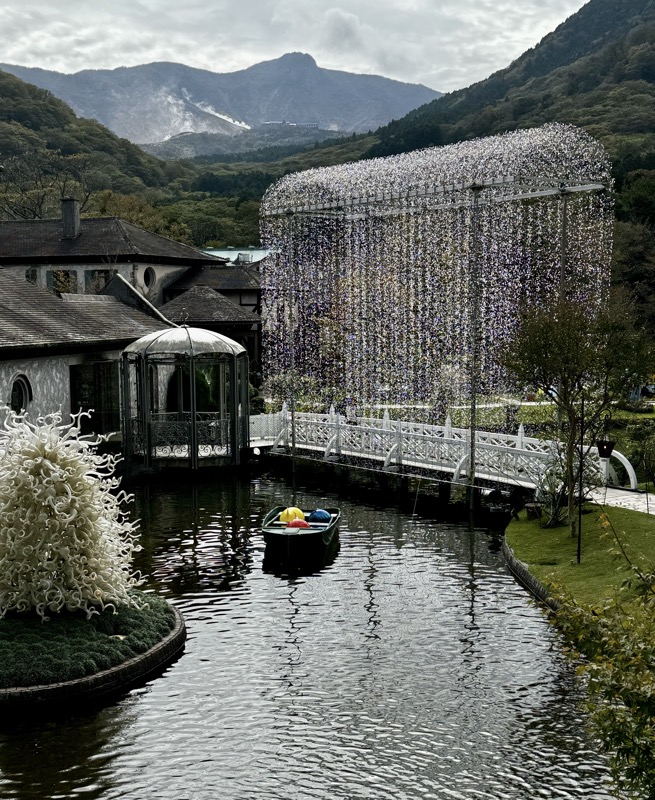
I saw this curly white glass sculpture in the middle of the lake and was immediately reminded of Dale Chihuly’s work… but didn’t think that likely as it was a Venetian glass collection, yes? Only to walk around the corner and find a plaque confirming that yes, it is actually a Chihuly.
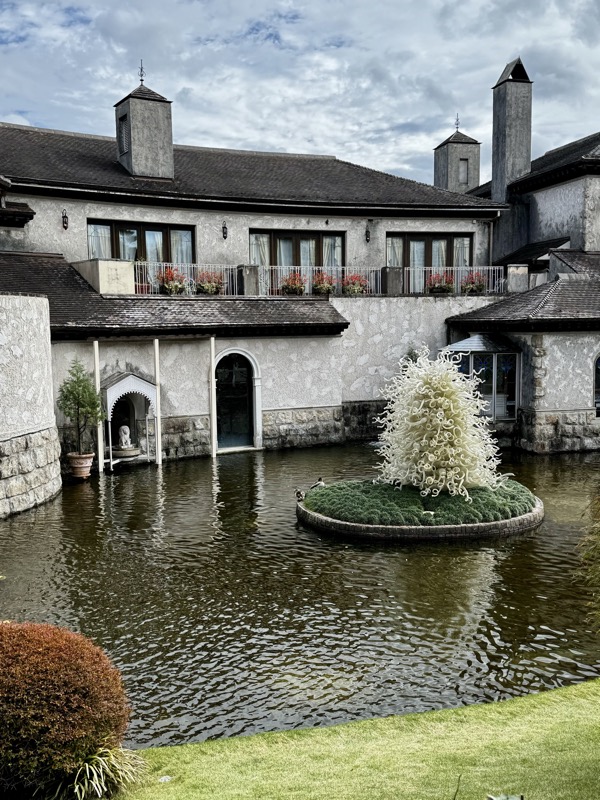




The Venetian Art Glass Musuem.
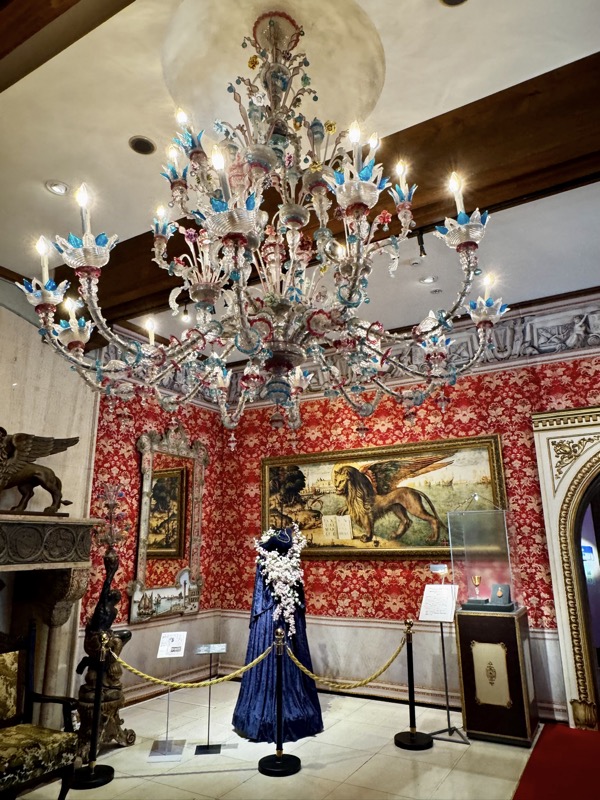
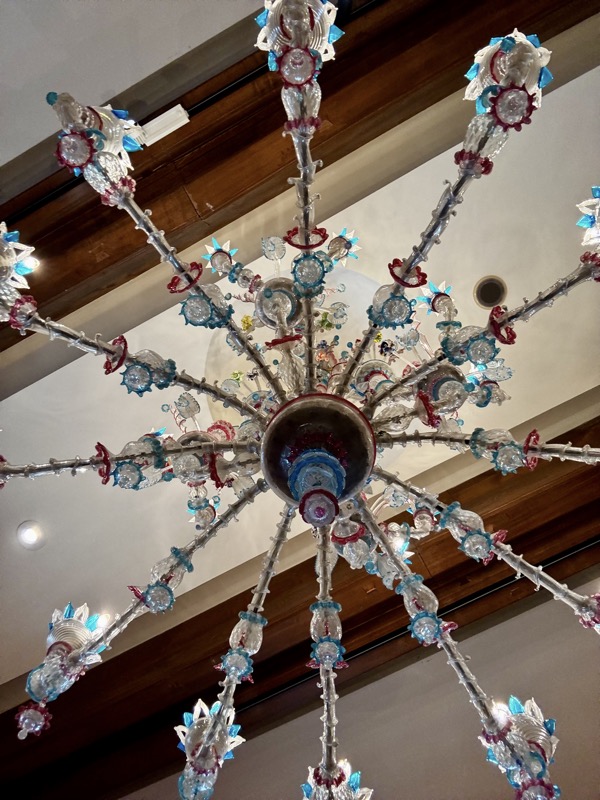


I don’t know what this cascade of glass flowers is called or when it was made – but it was interesting.
Glass perfume bottle in the carriage – Italy, c.1860.

Compote bowl and lid in filigrana a reticello techniques. Italian, undated.
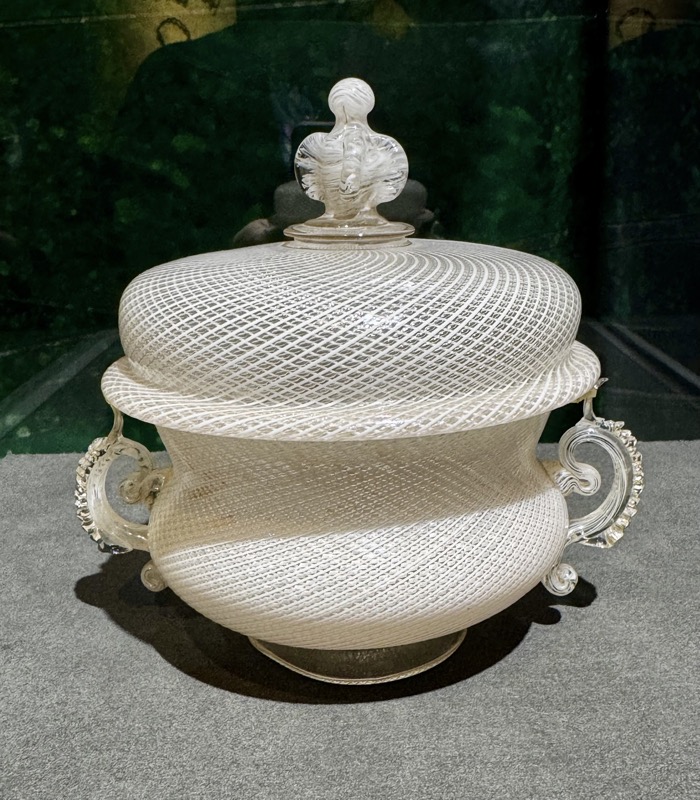
Wine glass in filigrana a reticello. Italy, c. 17thC
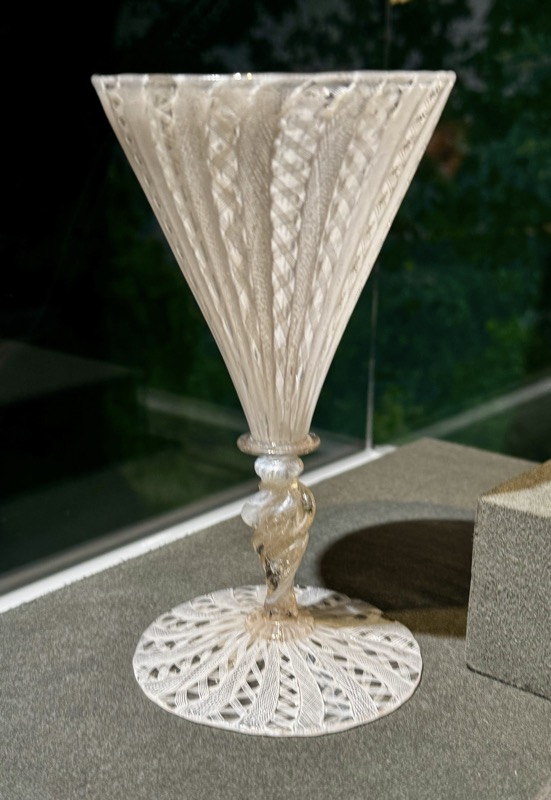
Glass ship hot work. 18thC Venice.
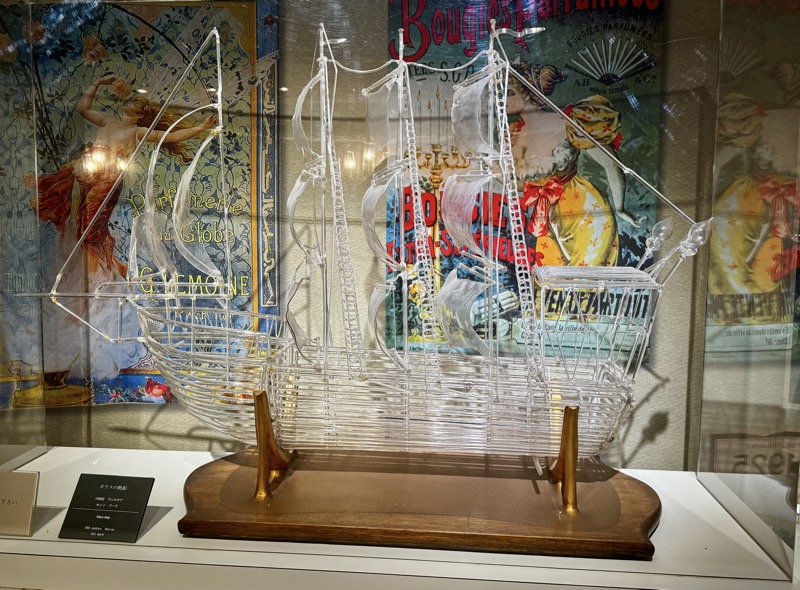

Mosaic of Doge Niccolo Marcello. This mosaic has a portrait of Niccolo Marcello, who was Doge (admiral) from 1473 to 1474, in the centre. Marcello Marcello’s portrait was repeatedly painted by Venetian painters such as Gentile Bellini and Titian in the 15th and 16th centuries. This mosaic was probably modeled on a portrait painted in a Venetian workshop.

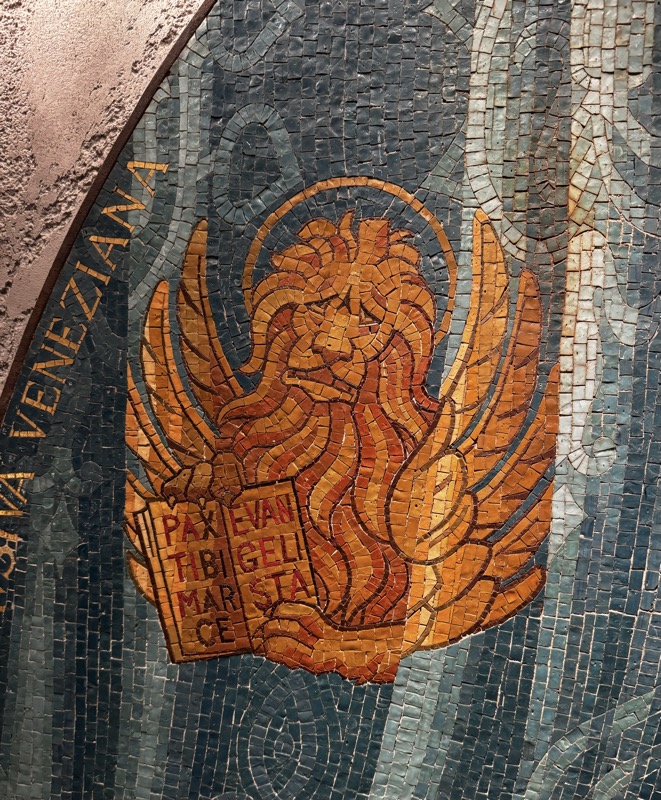

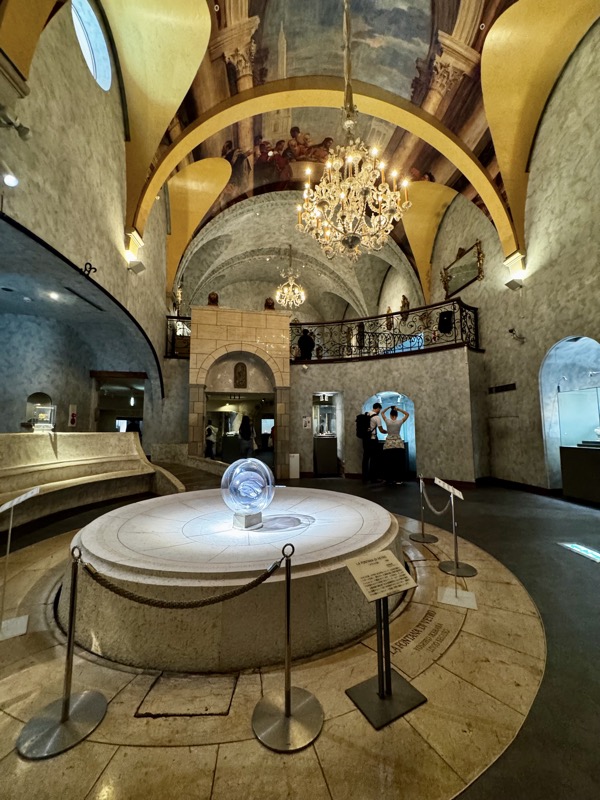
Bottle in rock crystal with two handles, c.16th.

Cave a parfum. c.1870.
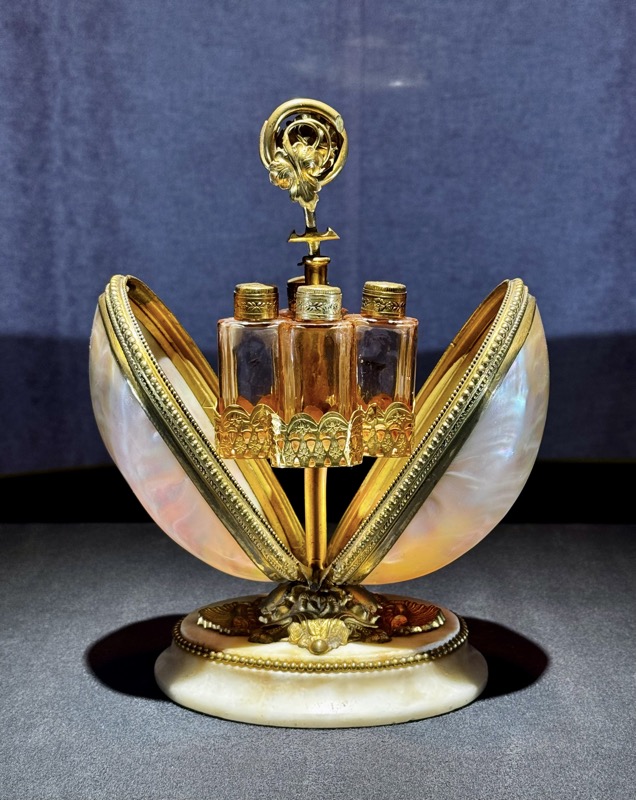
Glass rose water sprinkler, 18-19th C.
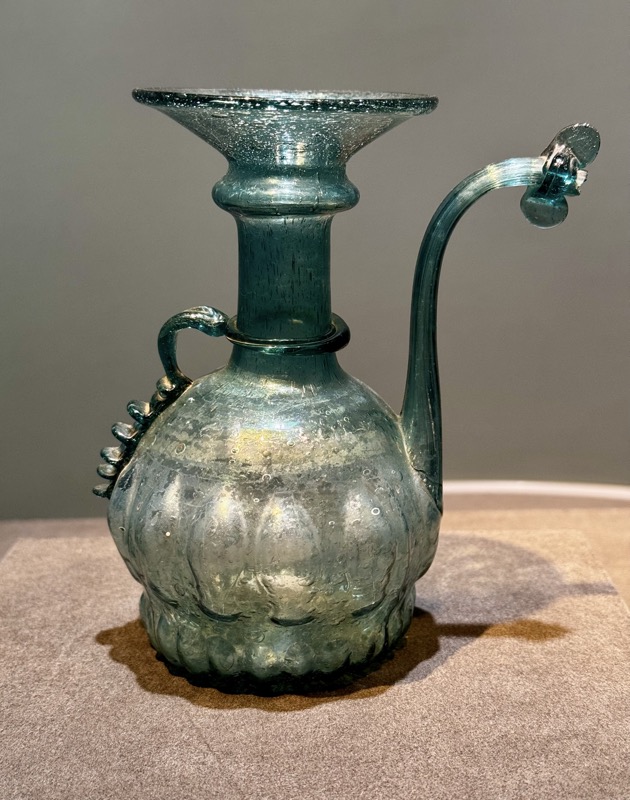
Insense burner with painting cicada and chrysanthemums, c.1840.
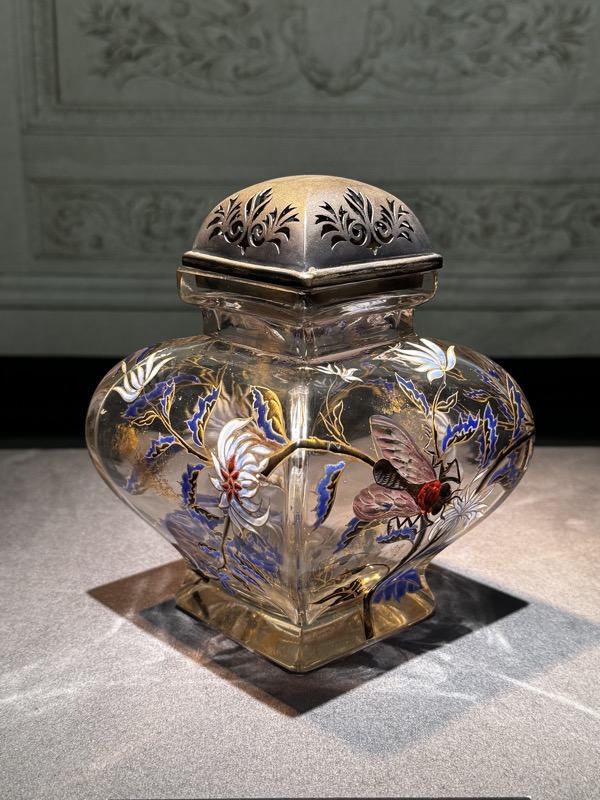
Bottle enameled with figures parading, c. 1500 AD.
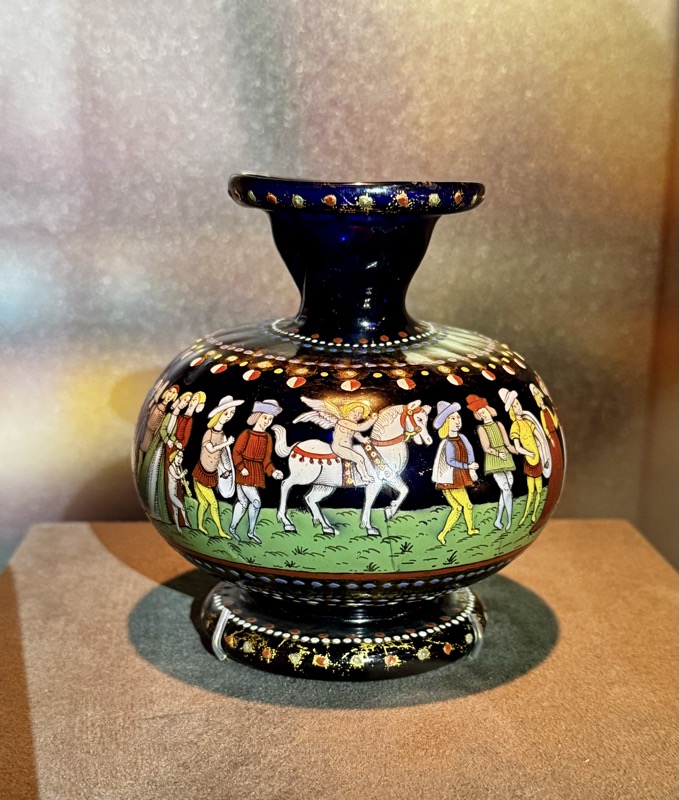
Core-formed glass fragrant oil bottle “arybollos” c.6thC.
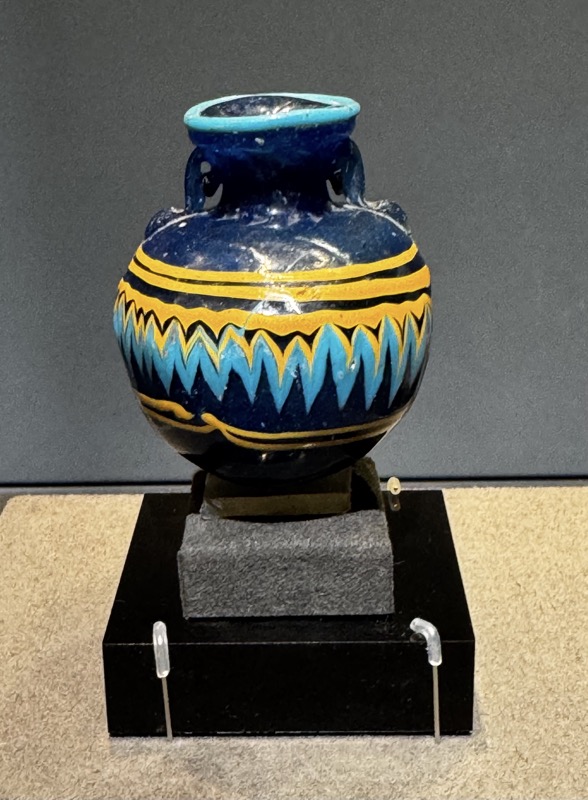
Flask in opaque-white glass (lattimo), c. 16thC,
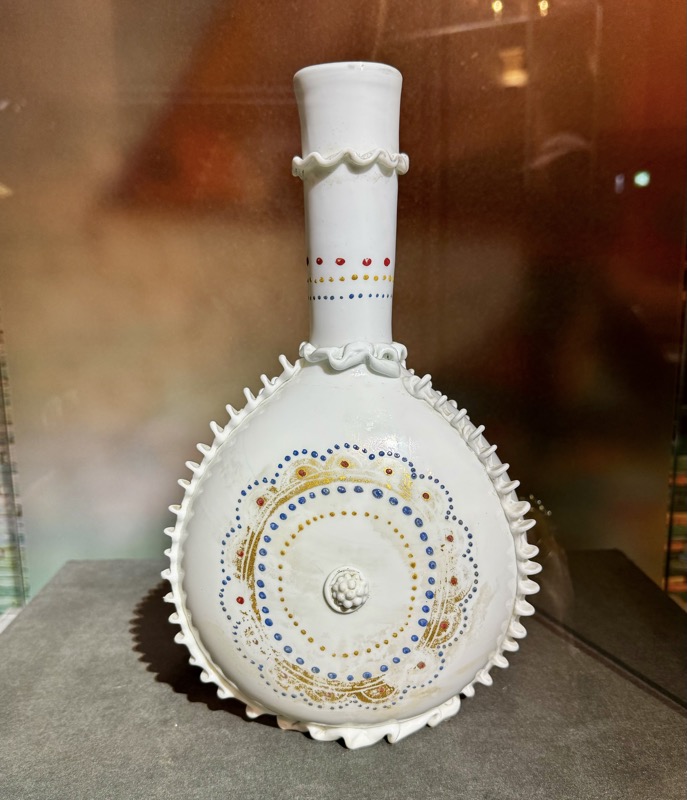
Porcelain perfume bottle decorated with florid motif. C. 1760.
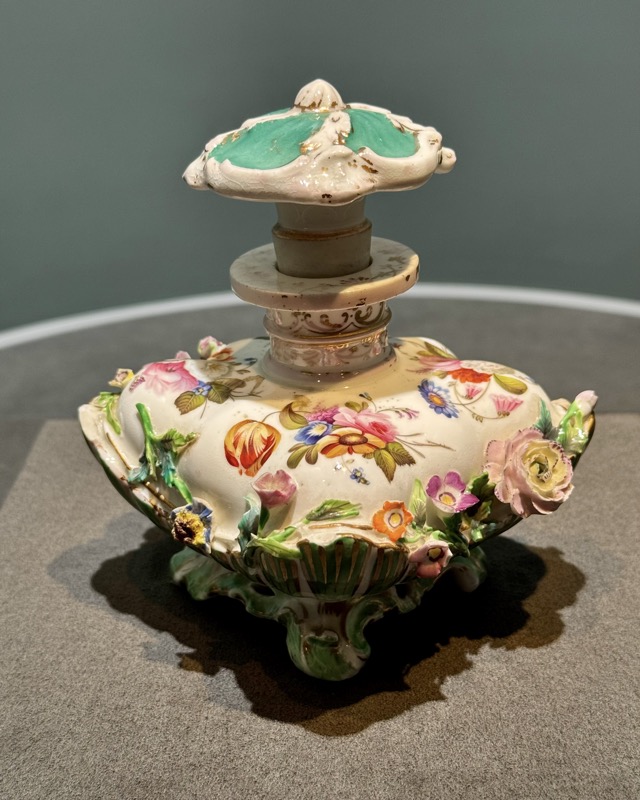
Black figure aryballos fragrant oil bottle, c.6thC.

Glass bottle with decoration, c.1C AD.

Toilet bottle, c.1stC AD.

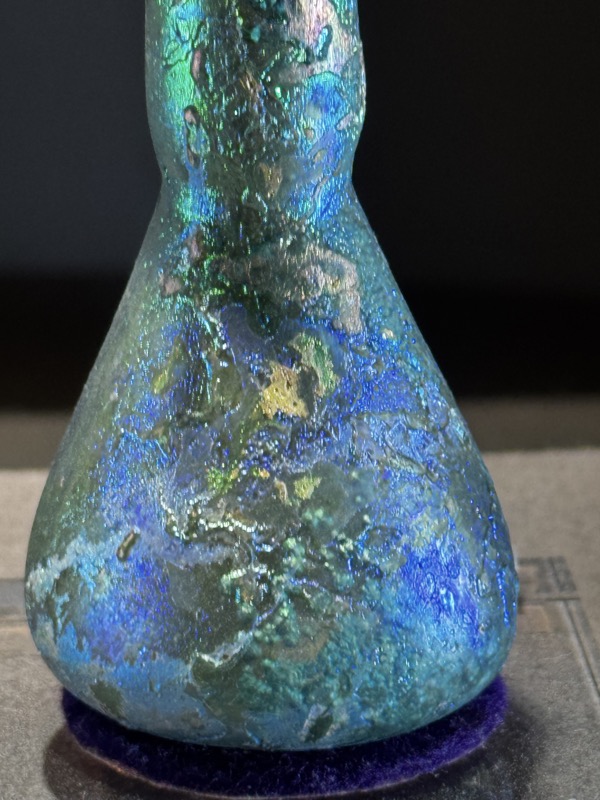
Double head glass flask, c.1stC AD.
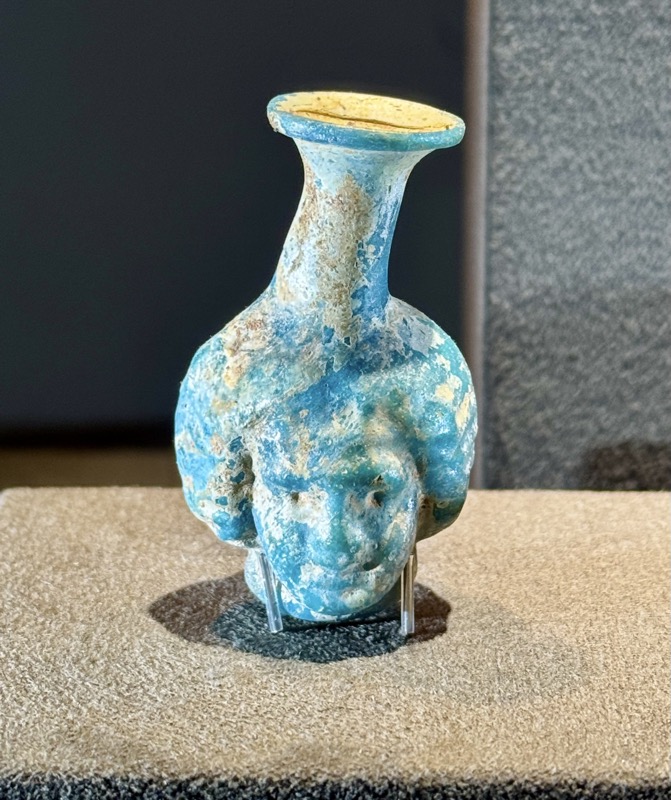
Porlain perfume bottle with enamels, c.1891-1920.
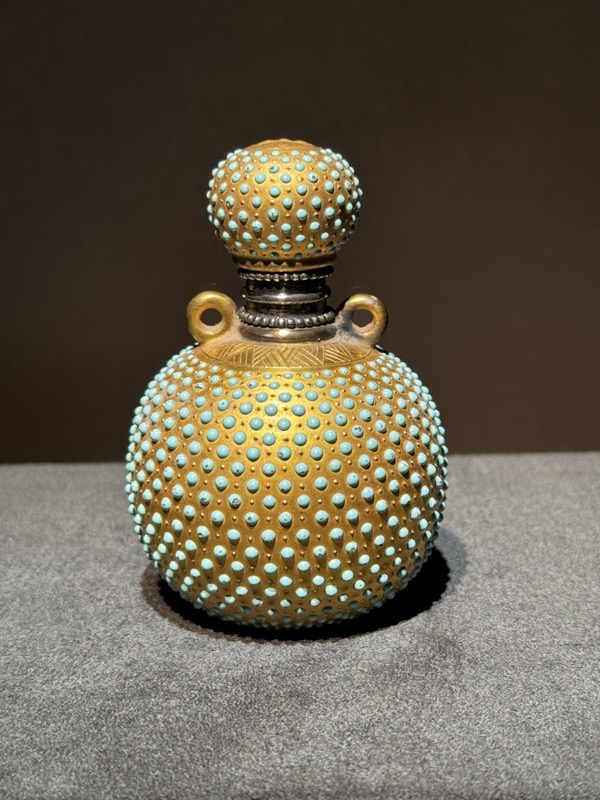
Glass perfume bottle “boy hon Fleur’s de Pommies”, c.1919.

Pair of glass perfume bottles in an enamel case, c.1770. This portable perfume set, which was popular at the court during the reign of King Louis XVI, is an extremely elegant case made of octagonal gold with beveled corners and decorated with a tortoiseshell pattern of scattered gold stars. It contains two glass perfume bottles with gold caps. The small gold funnel in the center is used to pour the blended perfume into the bottle. This piece was made as a special order for a French aristocrat.

Set of four glass perfume bottles with ornament case. Italy 19thC.
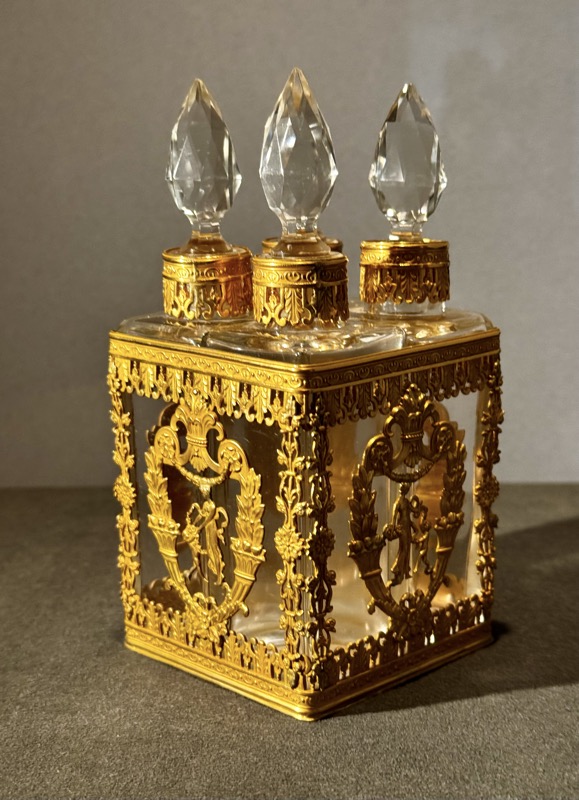
Mirror in glass mosaics, c.19thC.
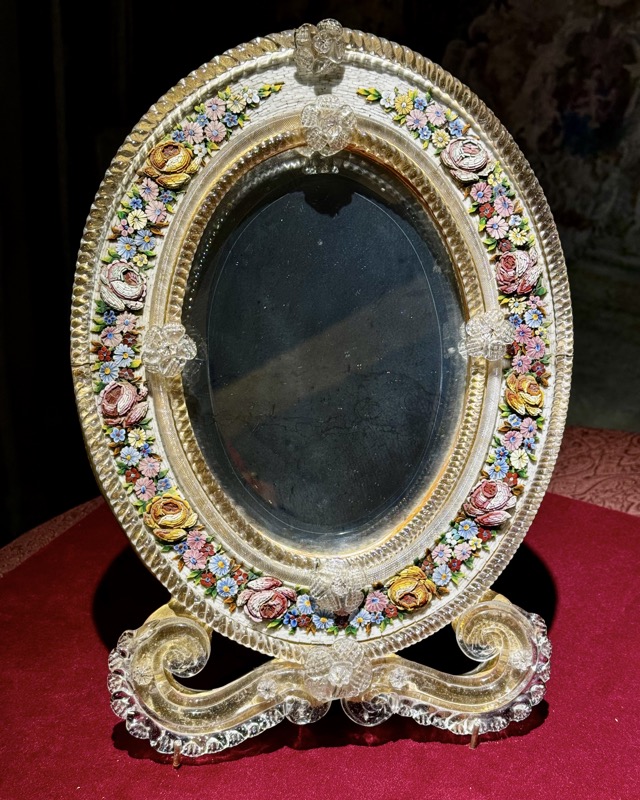
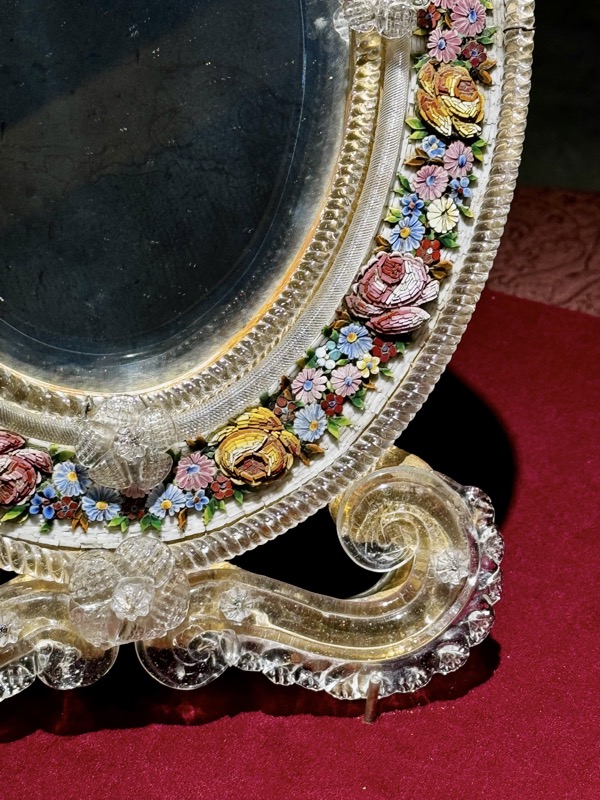
Pommander, c.1630… is this made of glass??? I’m not seeing it.
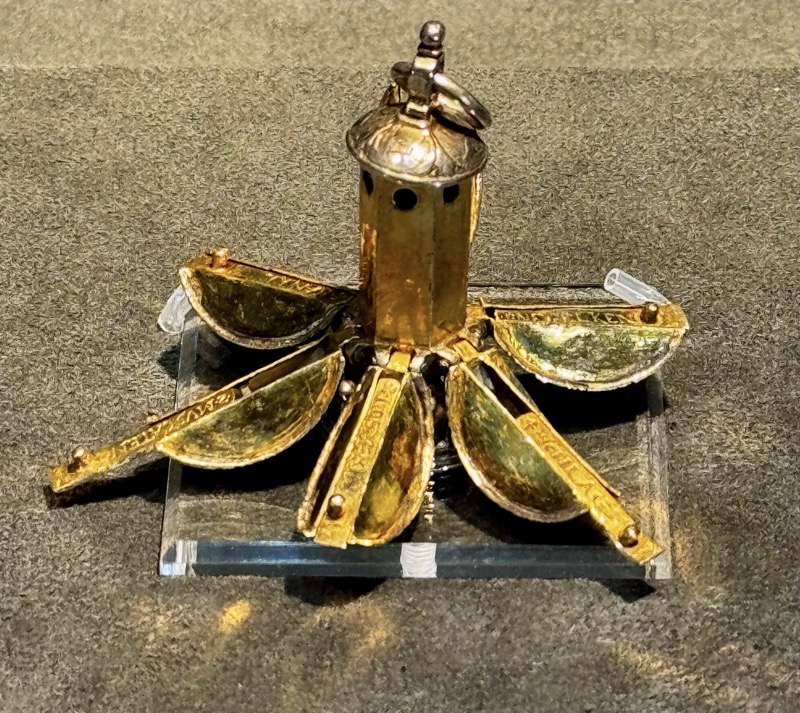
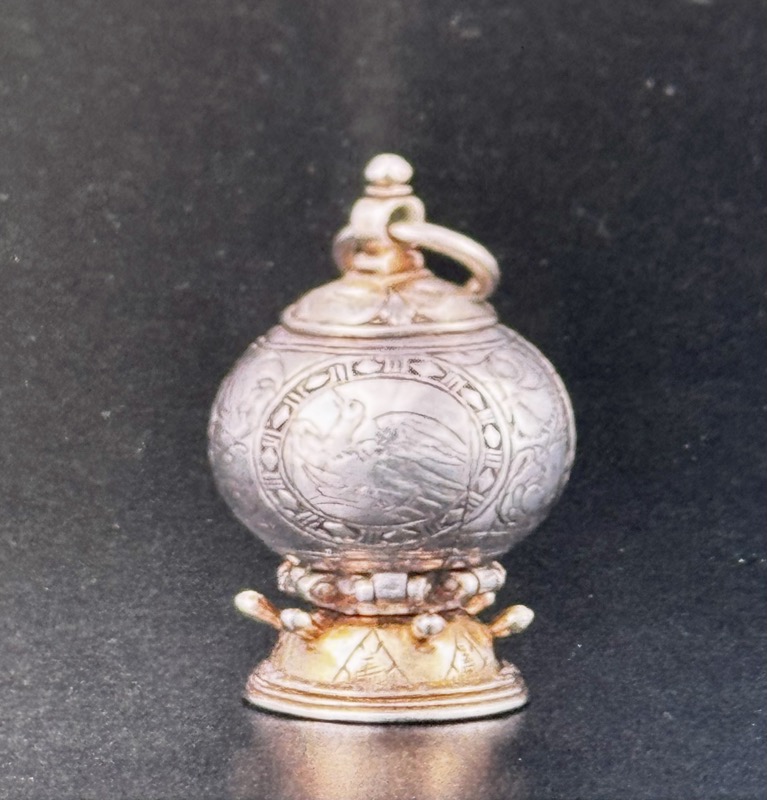
Lamps in Millefiori glass, c.1910.
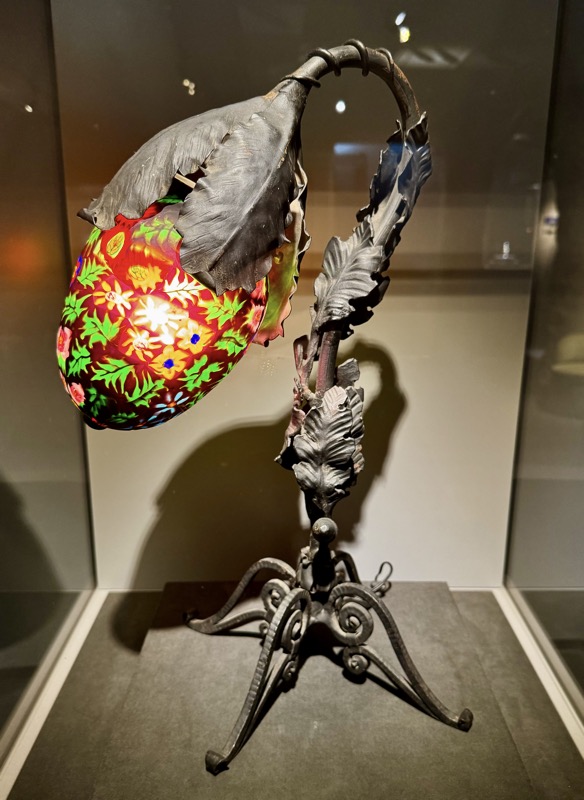


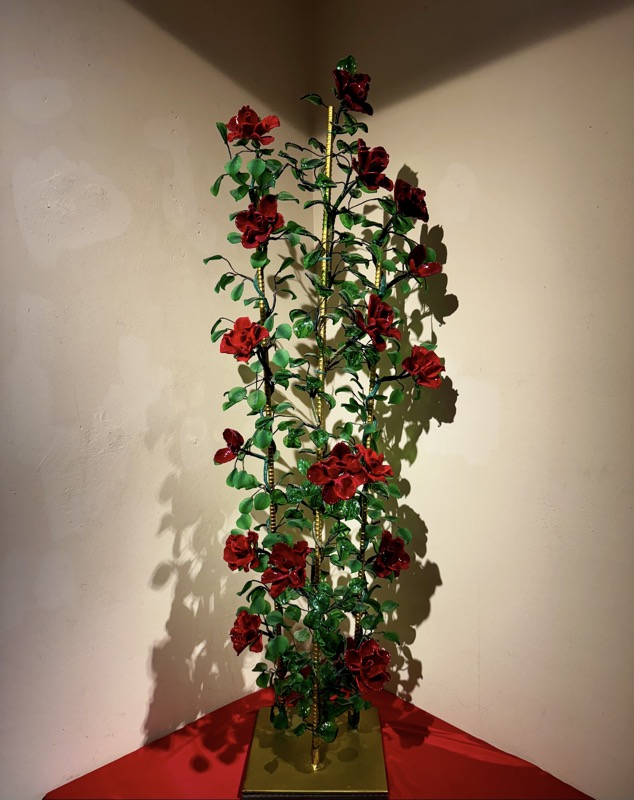
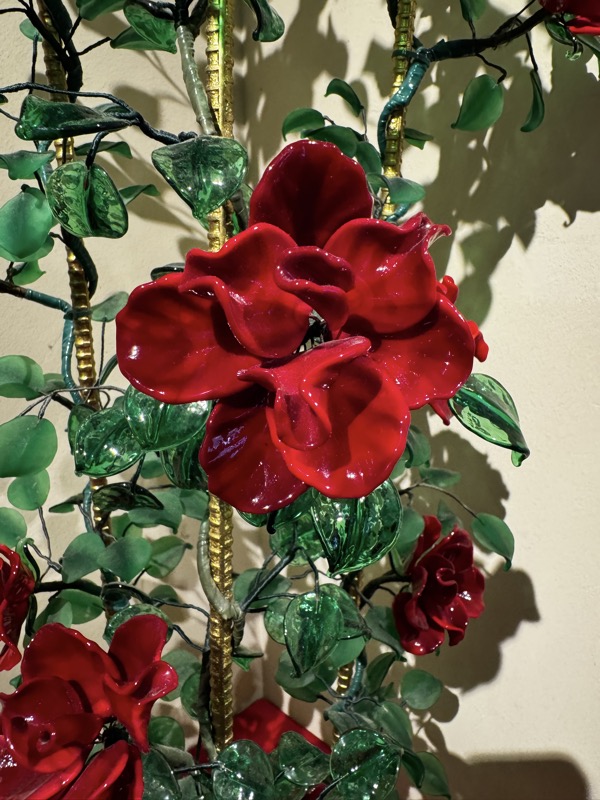
The Venetian Glass Rose Garden…

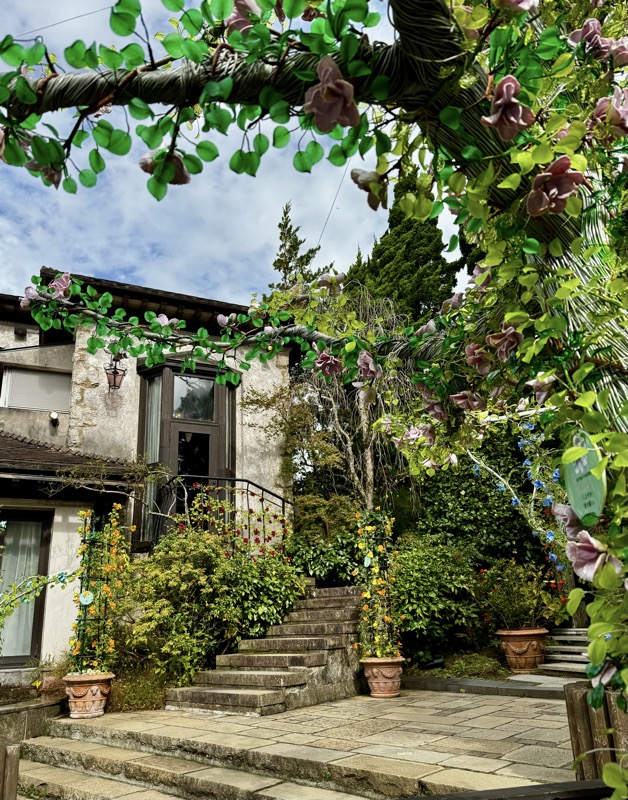
All the roses are made in glass… it’s really quite pretty and unfortunately very Insta-worthy. It took some patience to get some photos without the selfie crowd about!
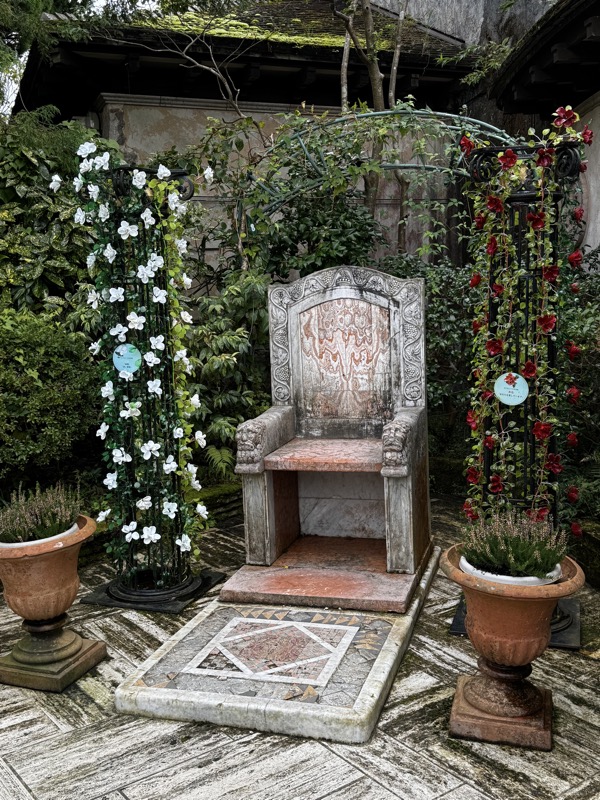
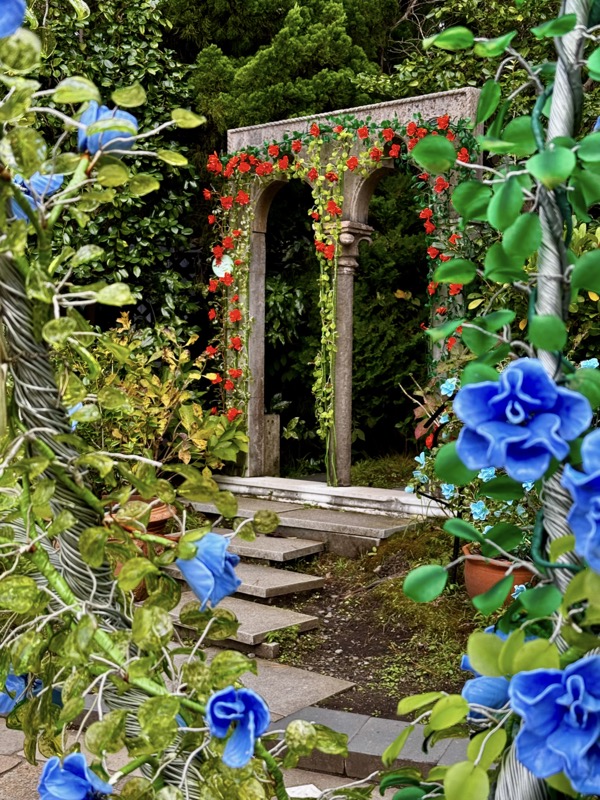


’Le Tre Grazie’, c.1996 : Three bubbles inside the sphere emit rainbows when exposed to light – a eulogy to purity and feminine grace.

’Compenetrazione Dinamica’, 1998. Livid Seguso, glass, marble stone.
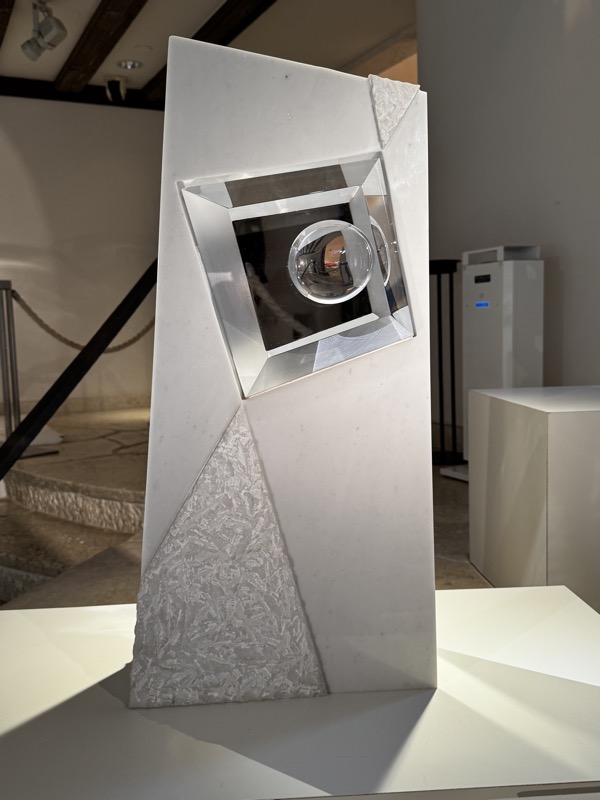
The indoor, Chilhuly ‘Form from Light’ exhibit.
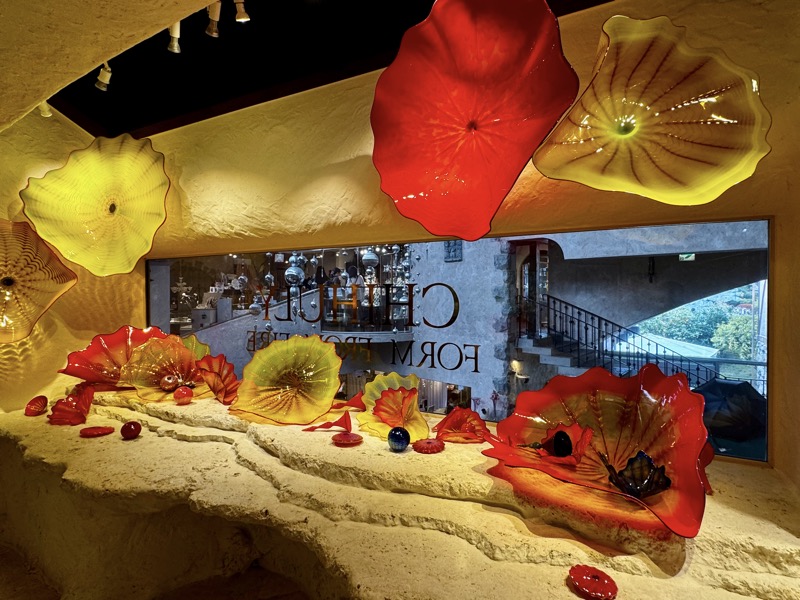
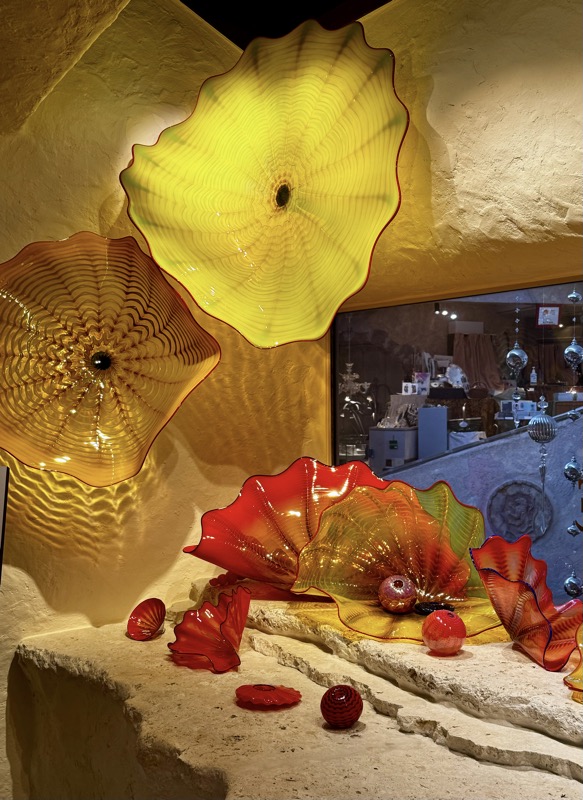
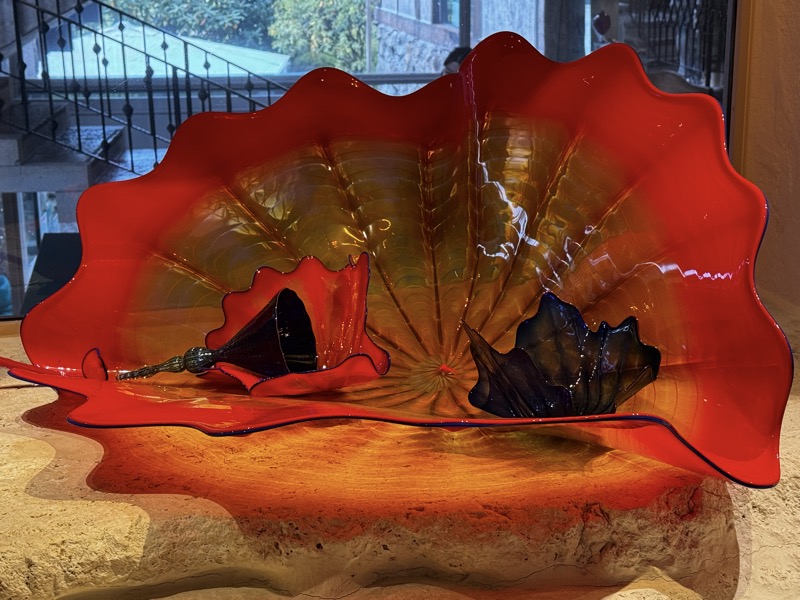

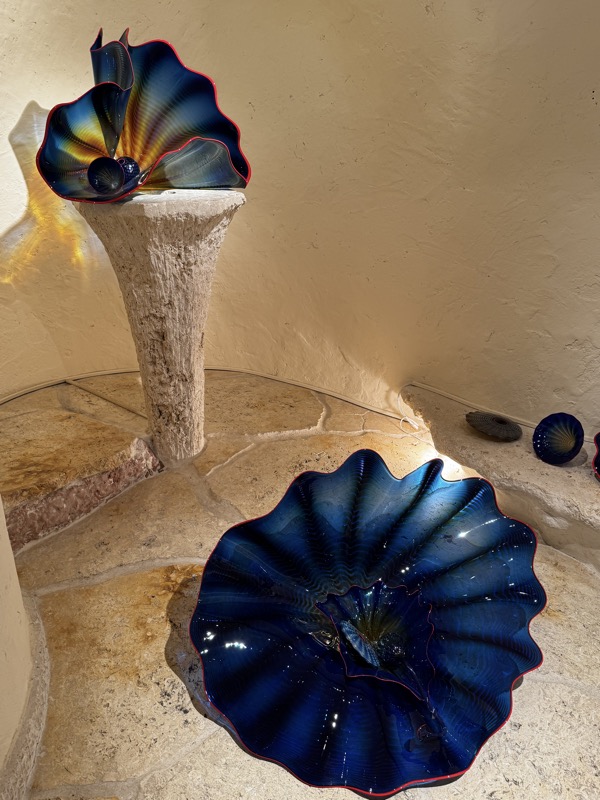
The gardens are really pretty and when the sun did peak out from behind the clouds, the sparkling in the glass forest was truly striking.
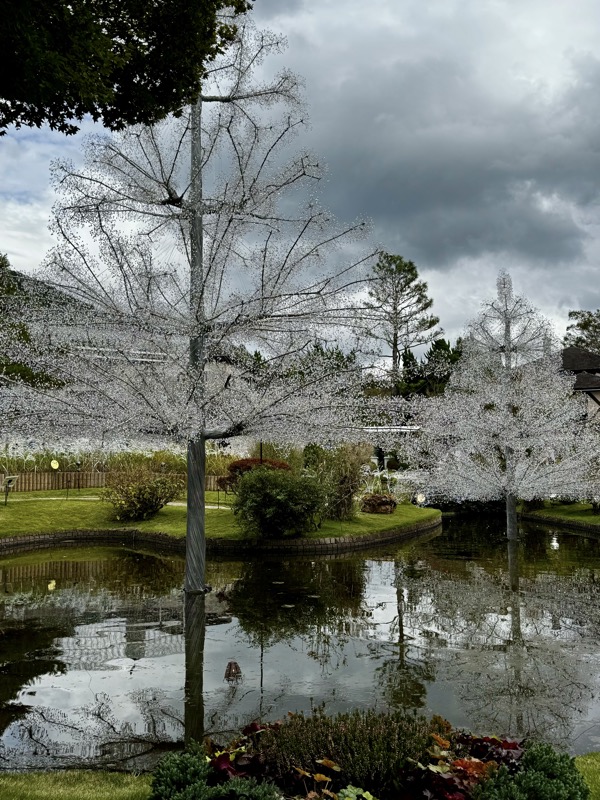
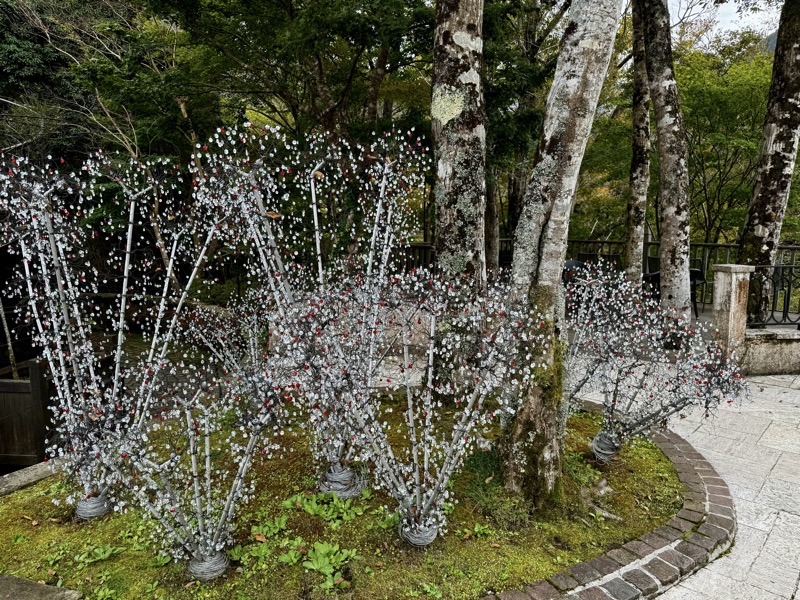
Onions and Reeds Installation, Dale Chihuly, c.1941.
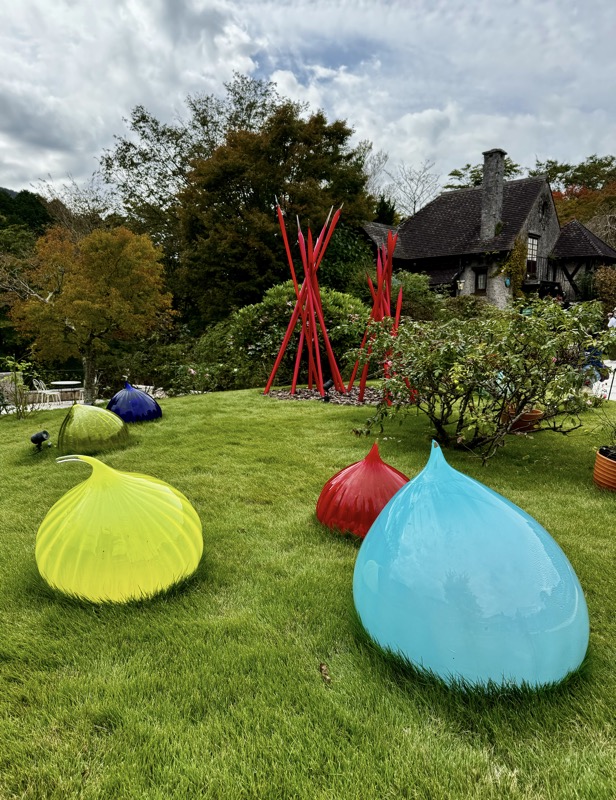
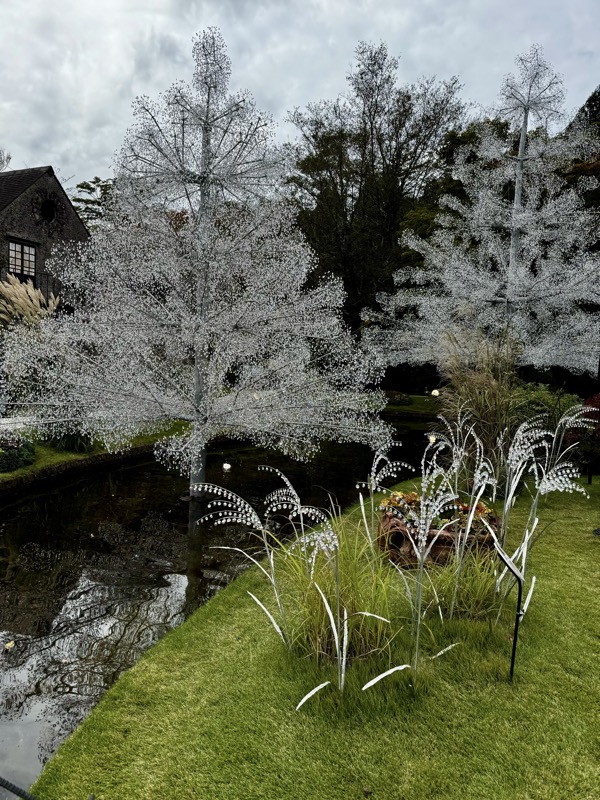

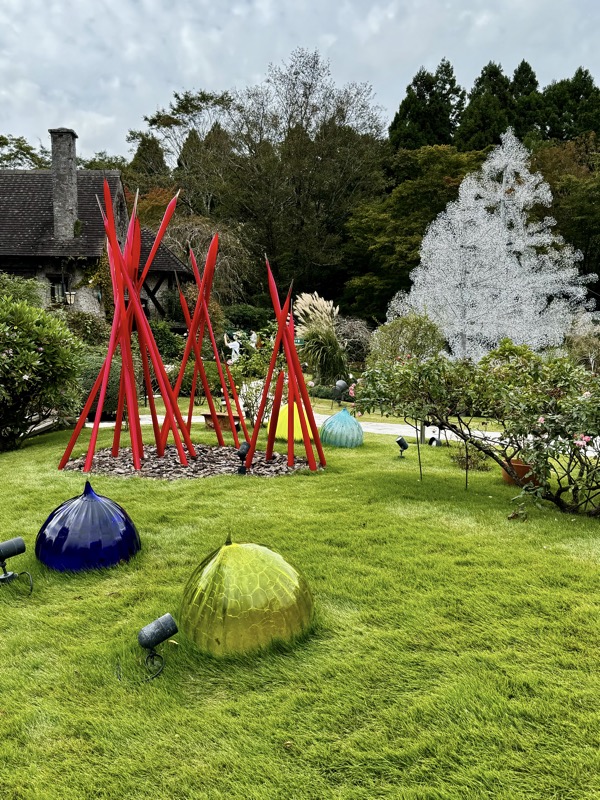
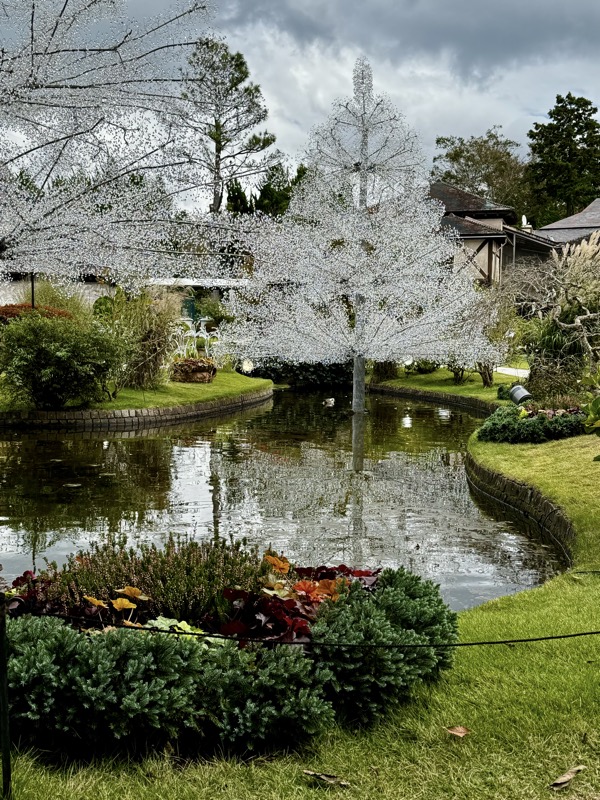
Such a striking sculpture, and from the ‘40s – it’s hard to believe it’s as old as it is given the nature of the medium.

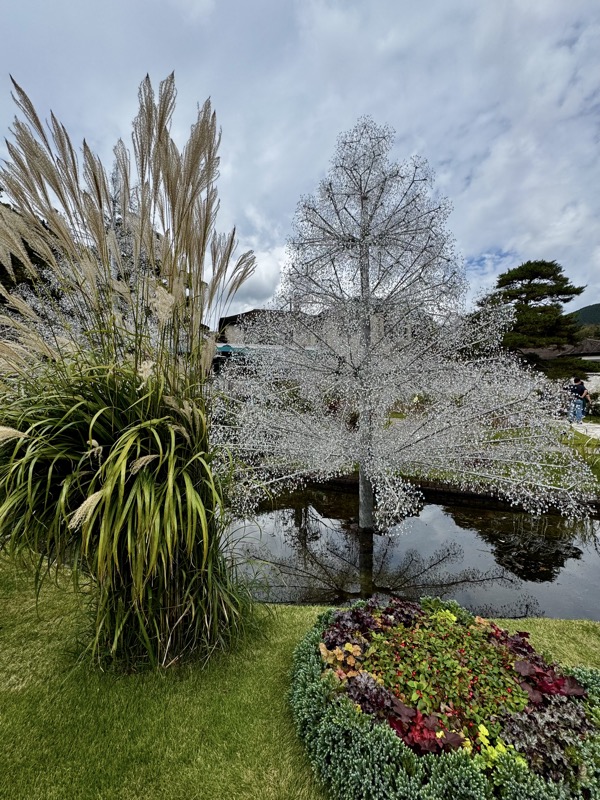
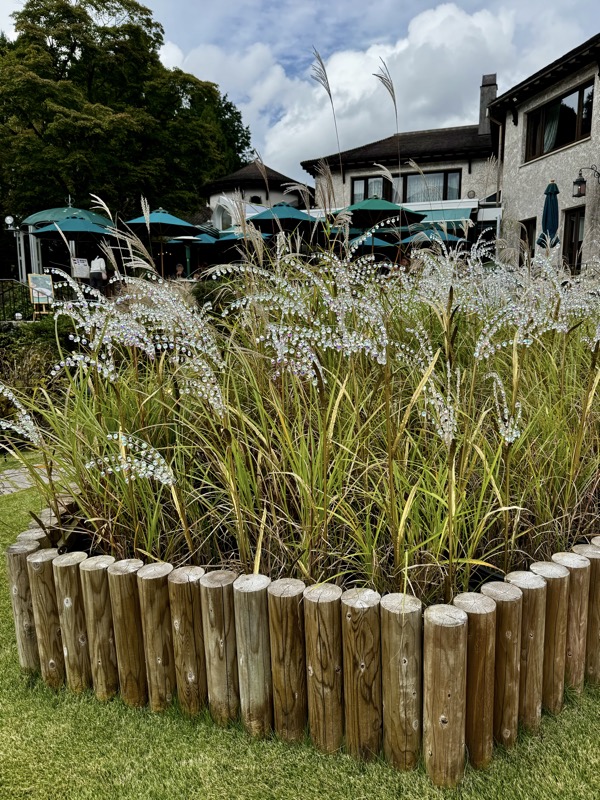
We also had a chance to go for a walk at the Hakone Open Air Museum. I am not super fond of modern art, but I think expected things to be a little less out of place than the Venetian glass!
”Sphere Mesh” – Francois Morellet, 1962-63, stainless steel.
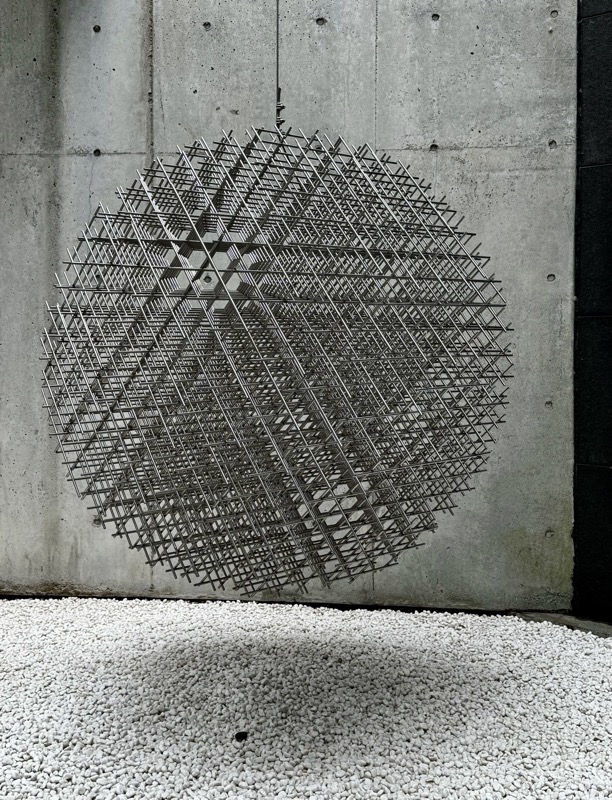
“Tree Man” – Taro Okamoto, 1971. FRP and paint.
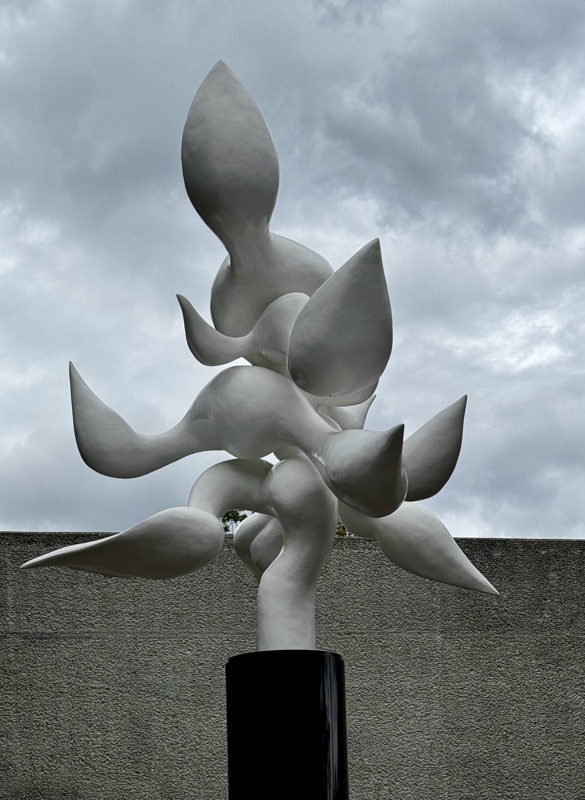
”Grand Striptease” – Giacomo Manzu, 1967, bronze.
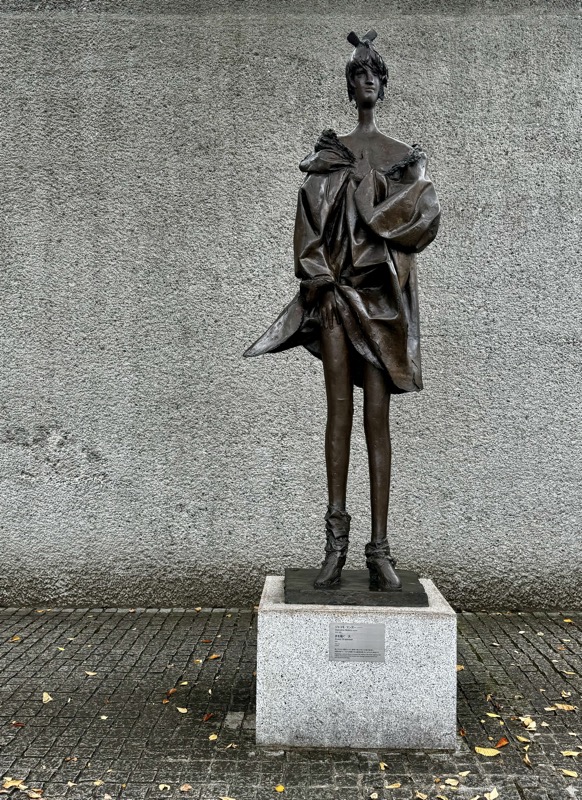
“The Weeper” – Francois-Xavier and Claude Lalanne, 1986, Trani stone. Sadly her pond was empty and she wasn’t weeping today.
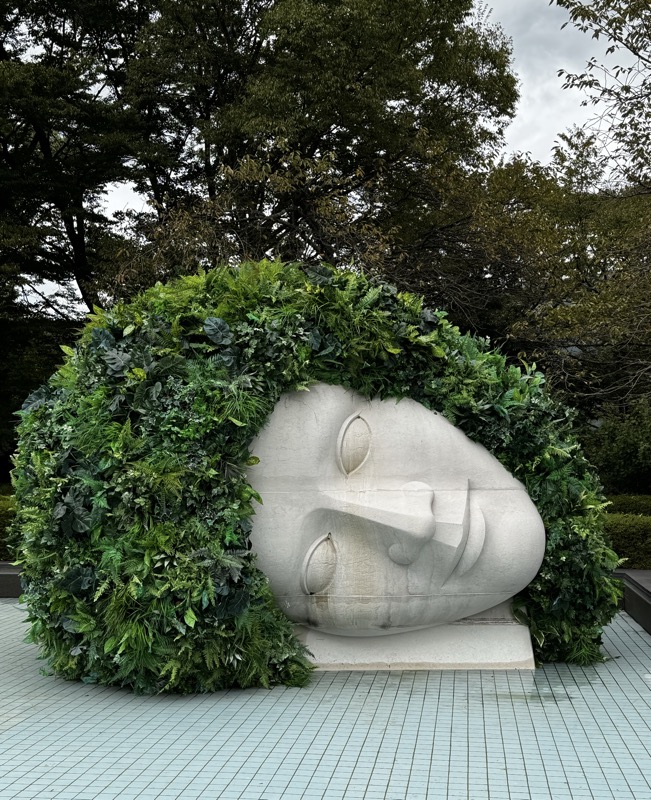
”my sky hole 84” – Bukichi Inoue, 1984, stainless steel.

I couldn’t find a description of these – there were four of them, and they seemed like kami to me. I will have to look them up when I find some time.
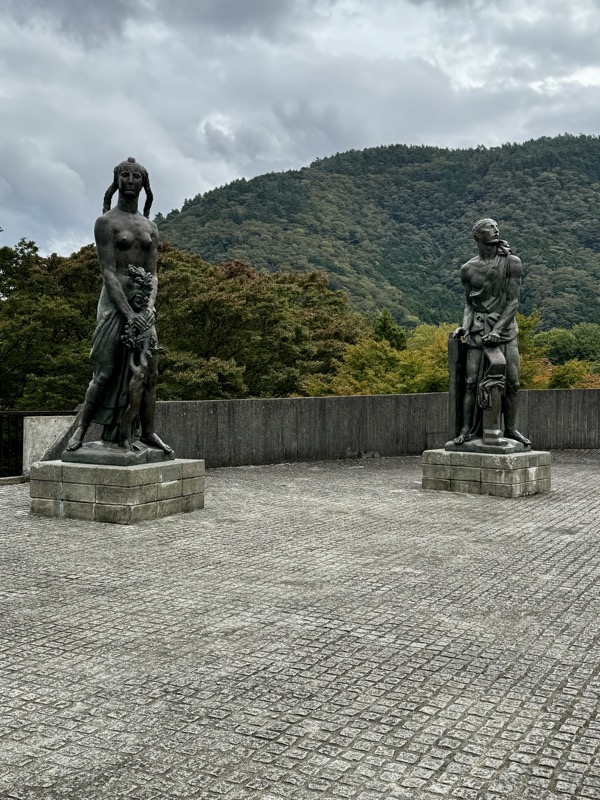

”Big Hand” – Rainer Kriester (German), 1973, aluminium.
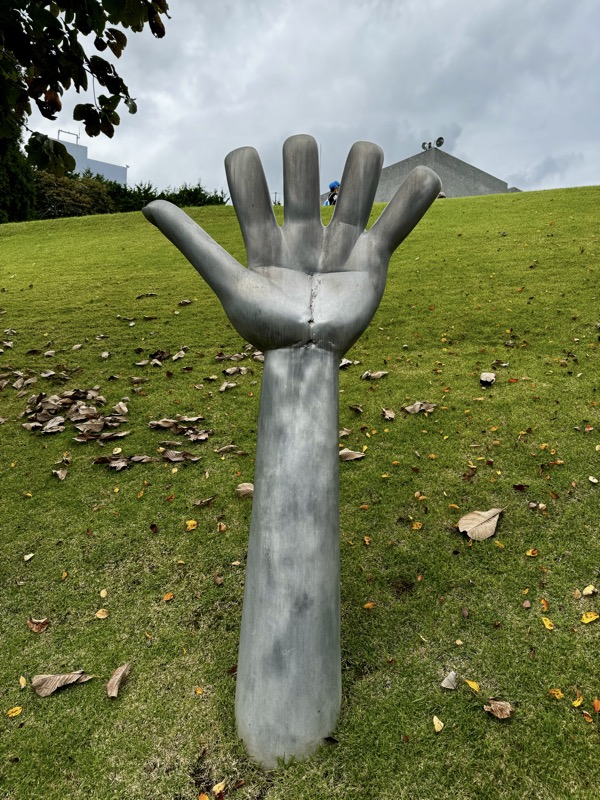
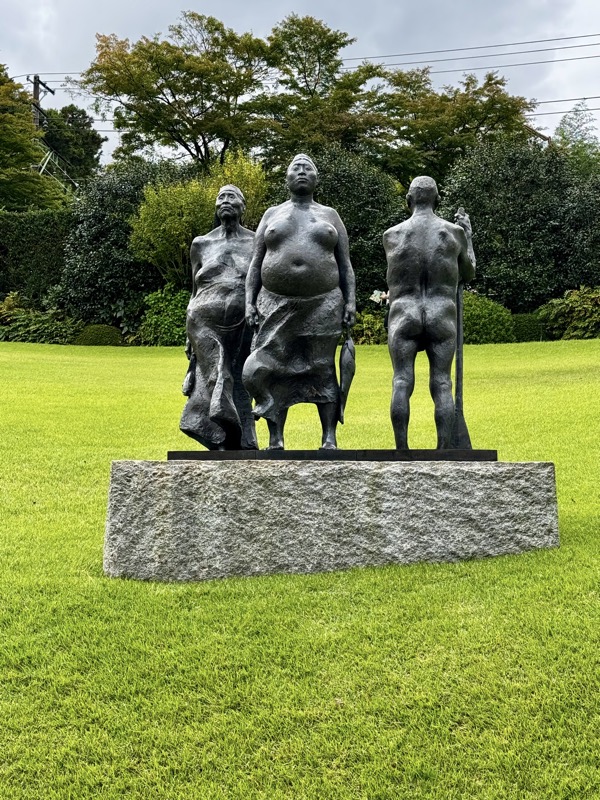
“Girl with Rooster” – Shin Hongo (Japanese), 1962, bronze.
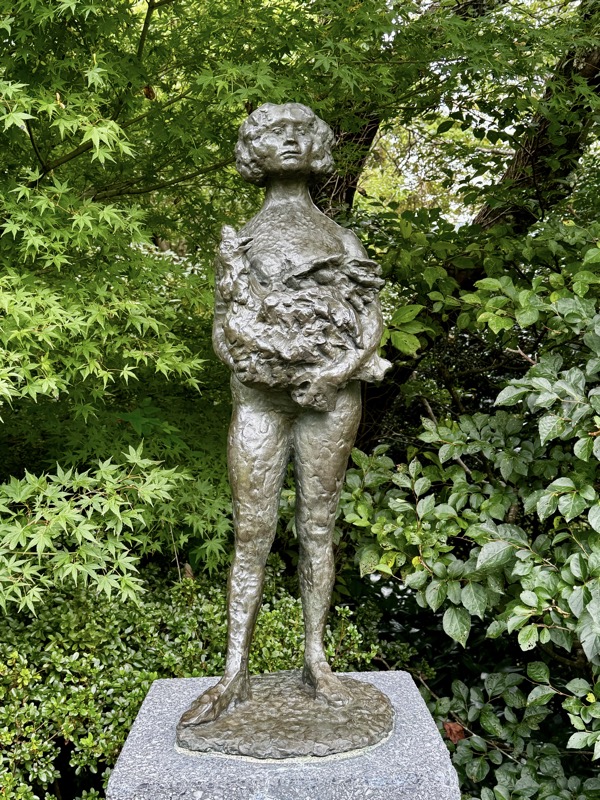
”Grandson of the General” – Seibo Kitamura (Japanese), 1918, bronze.


”Eva” – Francesco Messina (Italian), 1949, bronze.

”Pavillion Sculpture” – Max Bill (Swiss), 1969, white granite.
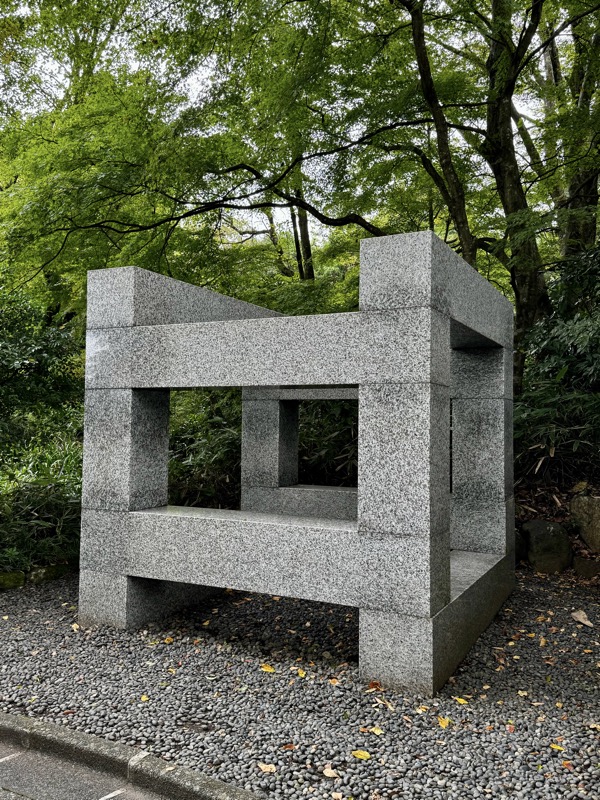
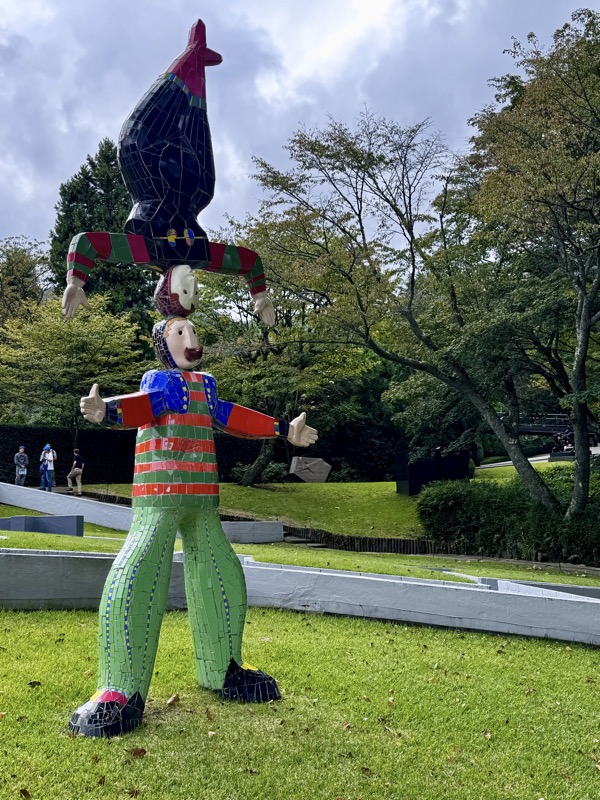

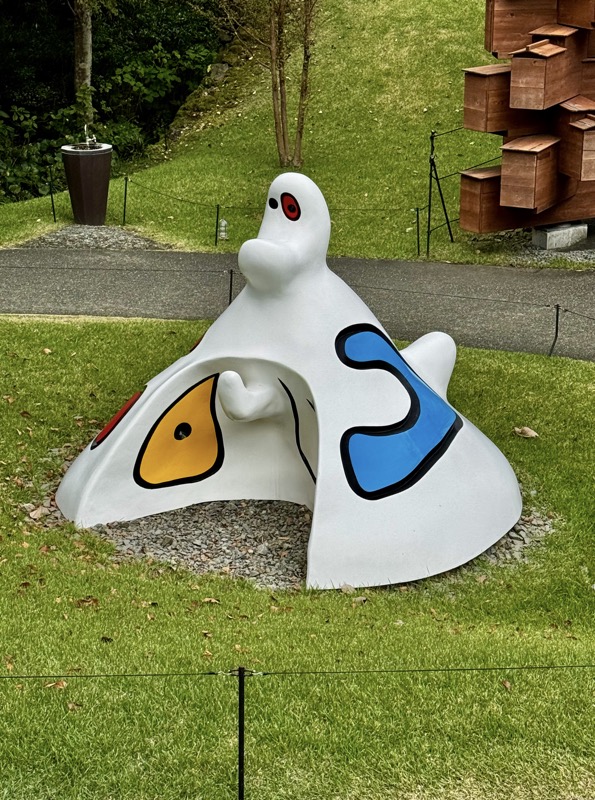
“Van Gogh Walking Through the Fields” – Ossip Zadkine (Russian/French), 1956, bronze.
As I approached this piece, I saw the worn face and the heavy accoutrement and assumed it was going to be a heavily laden fighter with weaponry, it was only as I got closer I could see it wasn’t guns he was carry, and wasn’t until I saw the plaque that it was like, ‘Oh wow, did I read that wrong.’

”Great Prophet” – Pablo Gargallo (Spanish), 1933, bronze.
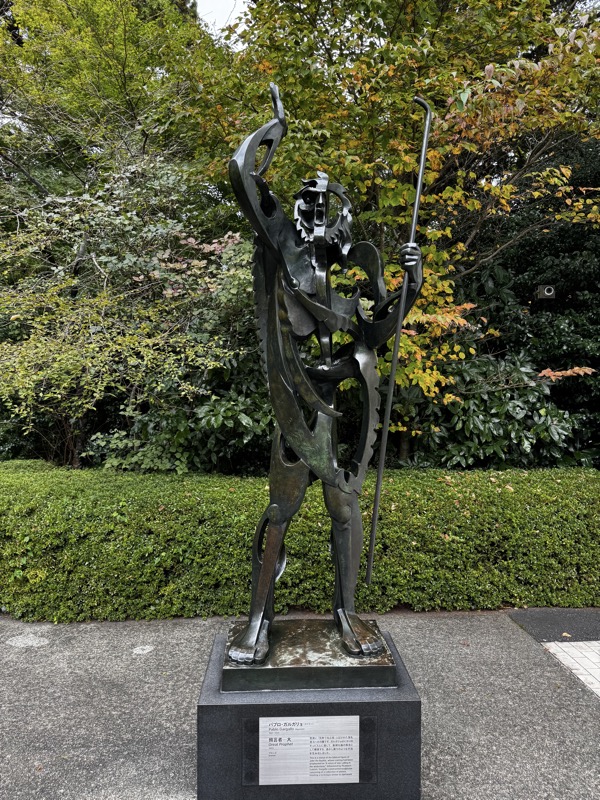
There is a world famous Picasso museum here, which is full of paintings, ceramics and even tapestries – most of which is created by Picasso himself, and some of which is inspired by the movement. To be honest, I’m not a huge fan. I can understand and appreciate the intent and important of most modern art; it’s just not that appealing to me, personally. Also – no photos. Sad panda face ensues.
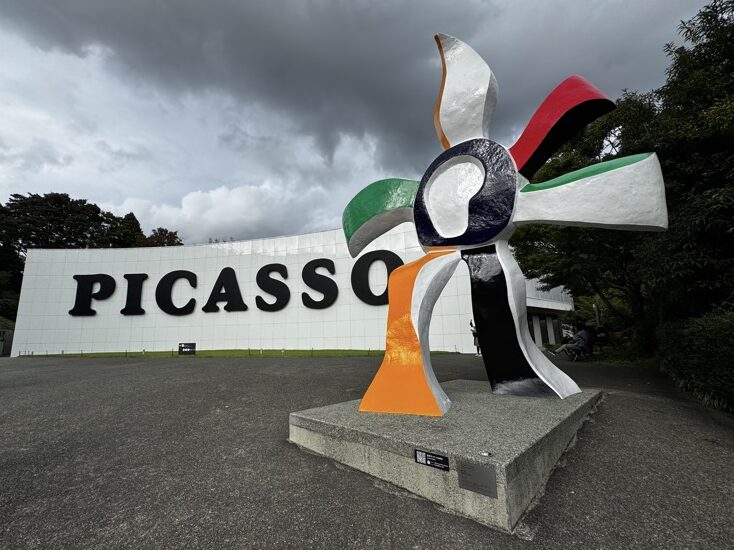
”Fairy Chapel” – Satoru Okamoto and Nsenda Lukumwena, 2005, stainless tell, float glass.
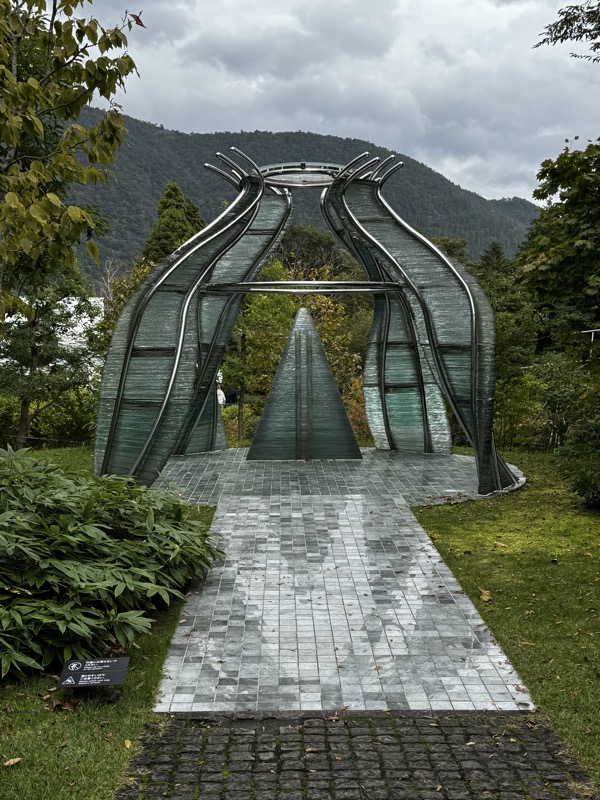
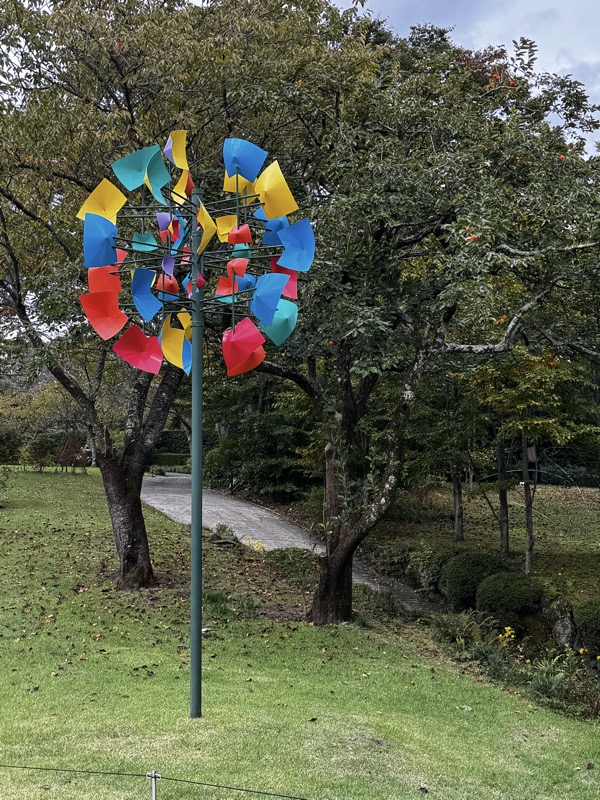
Symphonic Sculpture (below) – Gabriel Loire is an 18-meter-tall tower covered entirely in stained glass made from shards of thick glass broken by hand with a hammer. “The intricate designs and patterns allow the outside light to pass through it in complex refracting motions, creating a beautiful, fantastical world.” Oddly, we have perfect weather for this – bright contrast outside makes photographing stained glass tricky.
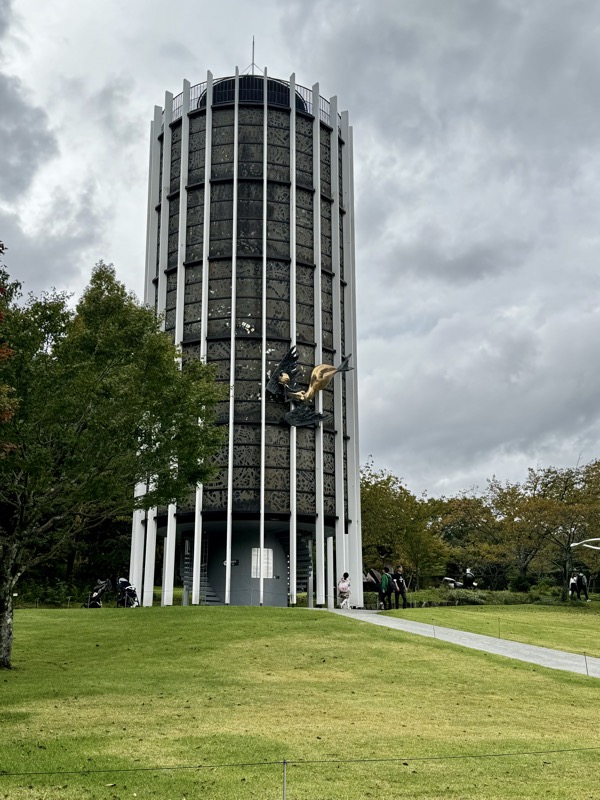

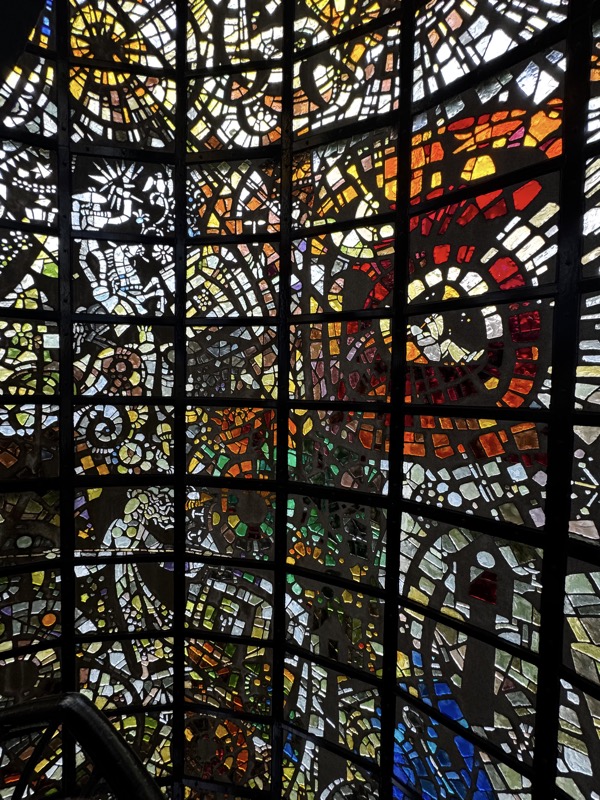
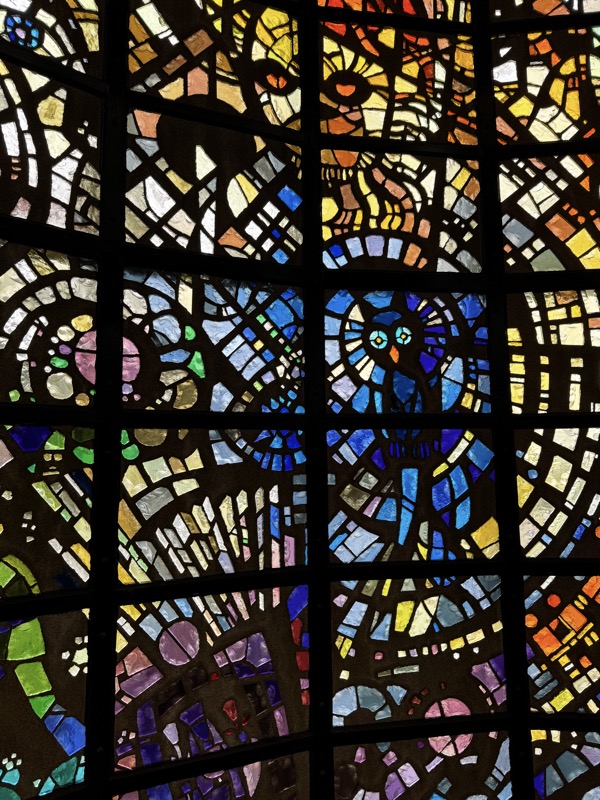
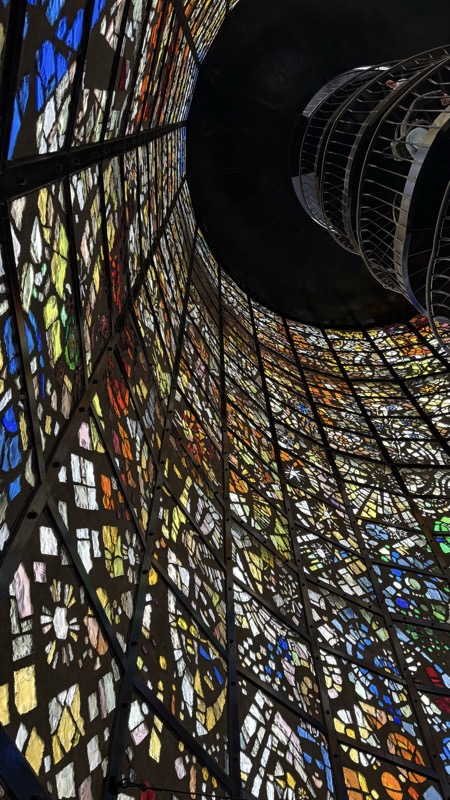


It’s pretty spectacular… but no Saint Chapelle!! 😛
”Two Piece Reclining Figure: Points” – Henry Moore (British), 1968-70, bronze.
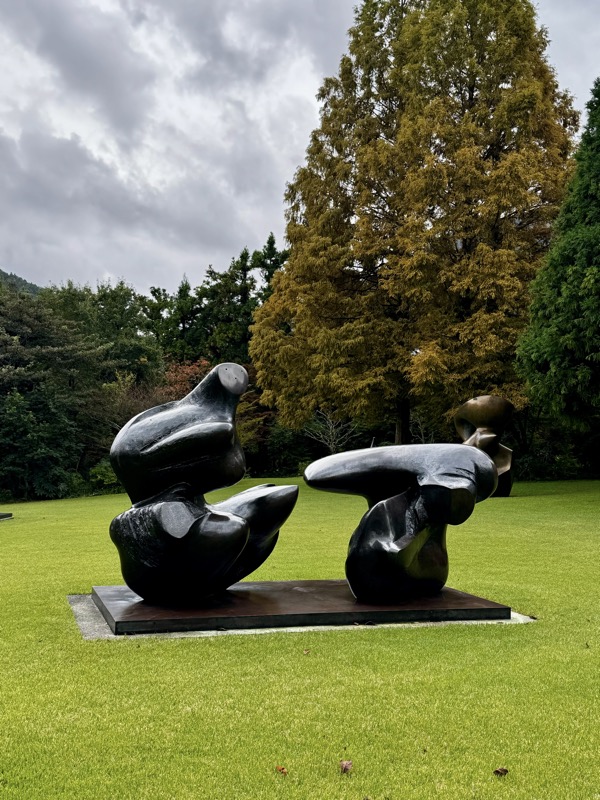
”Family Group” – Henry Moore (British), 1948-49, bronze.
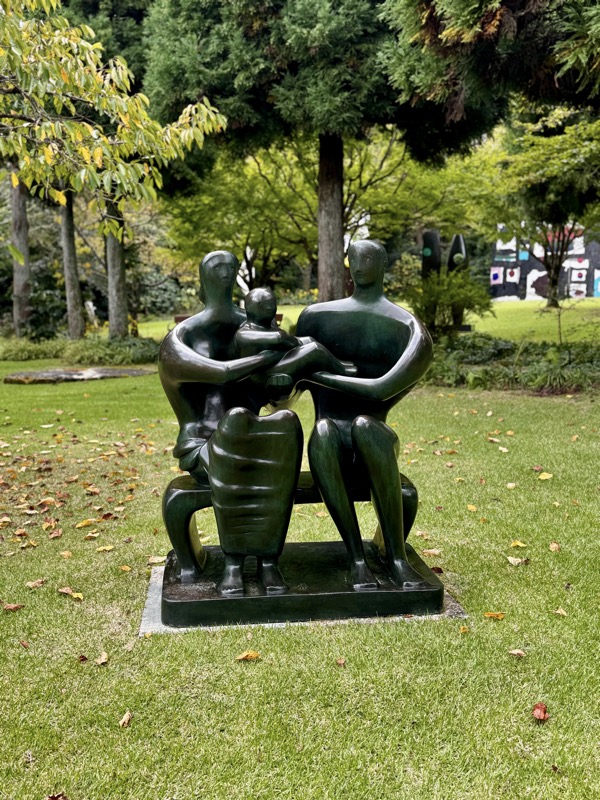
”Miss Black Power” – Niki de Saint Phalle (French), 1968, polyester resin, paint.
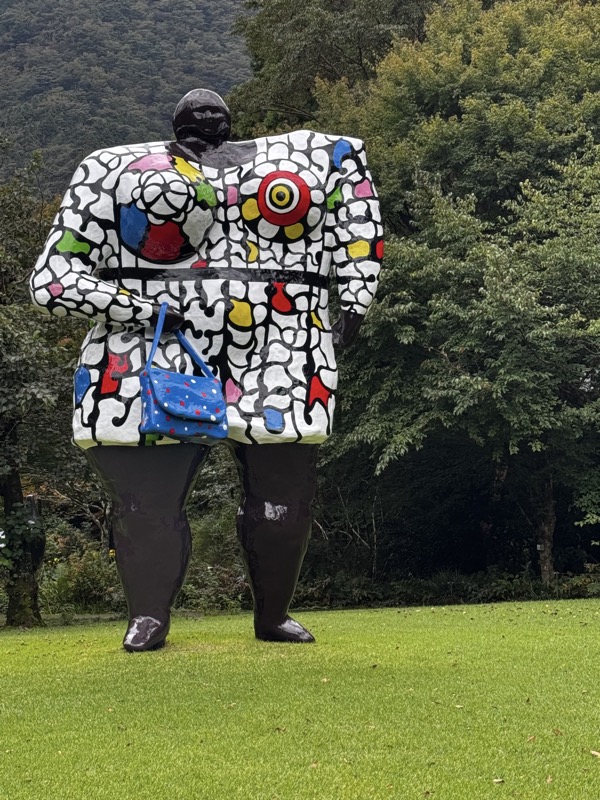
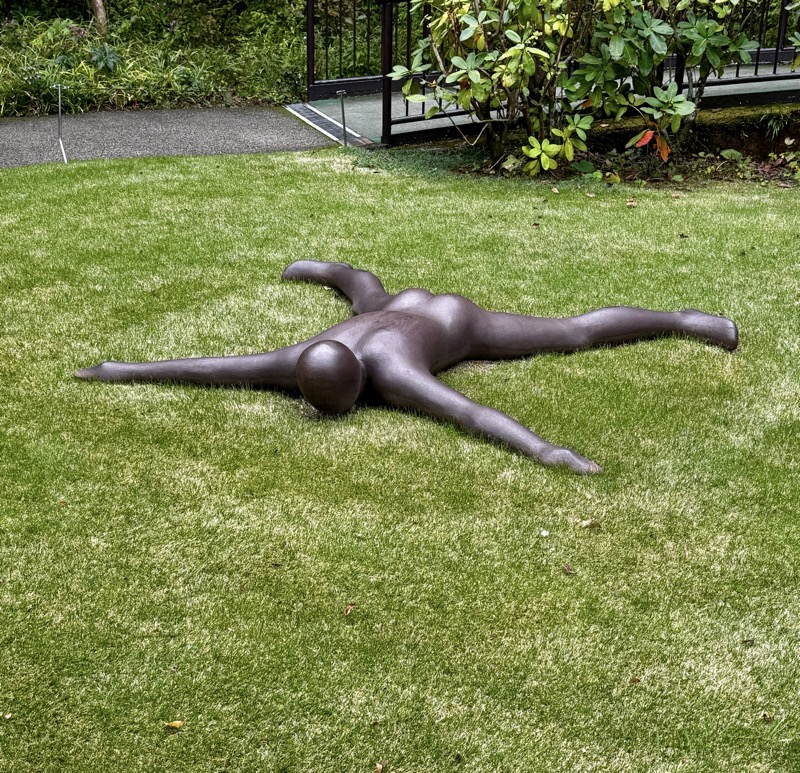
“Close III” – Anthony Gormley (British), 1993, iron. I LOVE this piece! It’s so simple and yet speaks to me. The artist’s statement, not so much, but the figure itself. 🙂 ‘The artist recreated his body in iron. The rotatation and orbital revolution of the Earth produces centrifugal force and gravity binding it to the ground.’ Sure… but to me it speaks of years of exhaustion and chronic fatigue and pain.
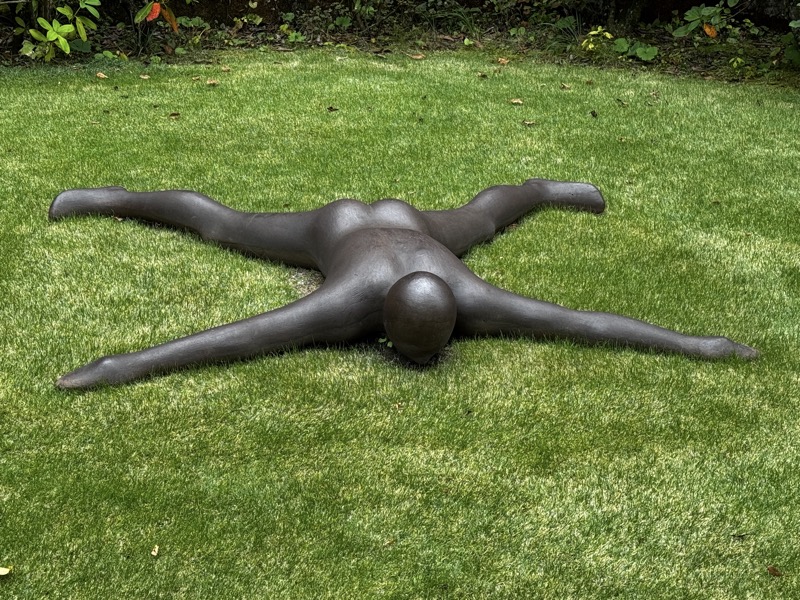
”The Boxing Ones” – Barry Flanagan.
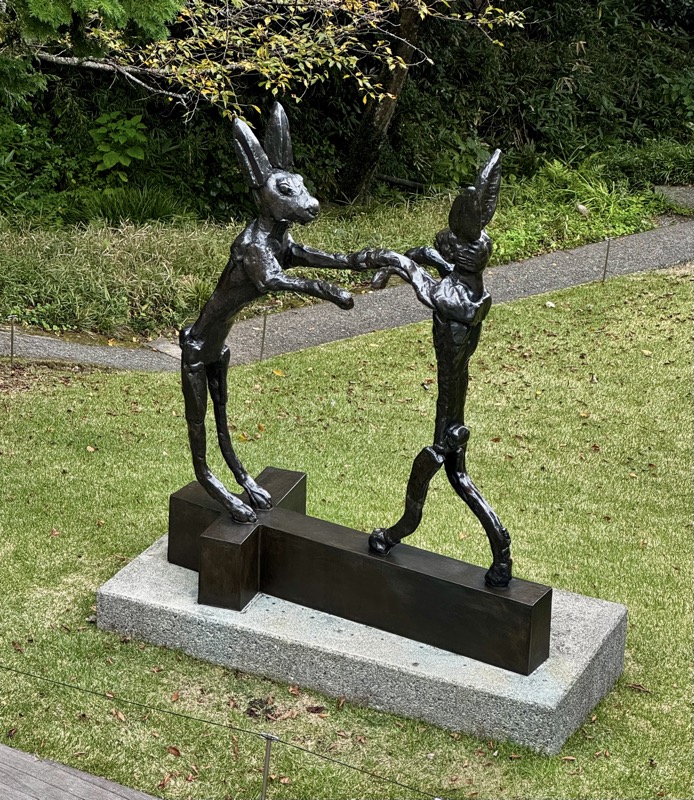
“Two Eggs” – ??? I have a note here somewhere…
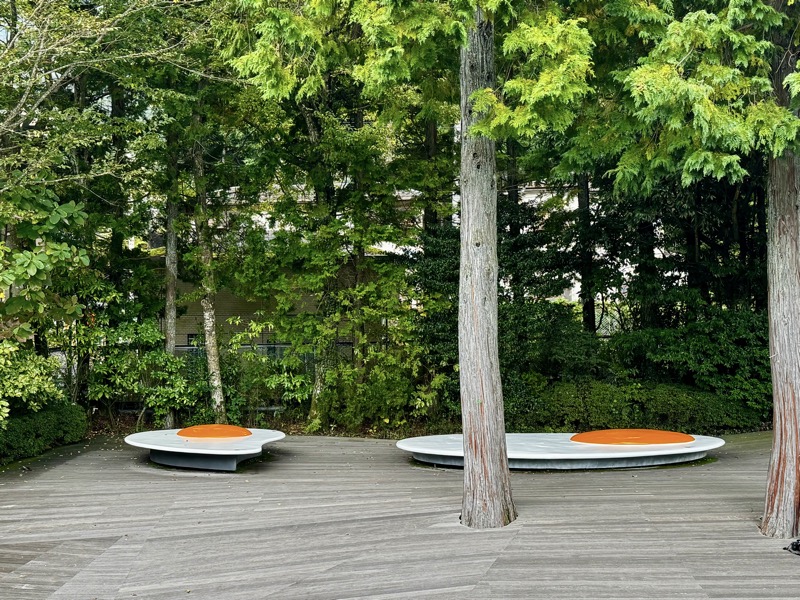
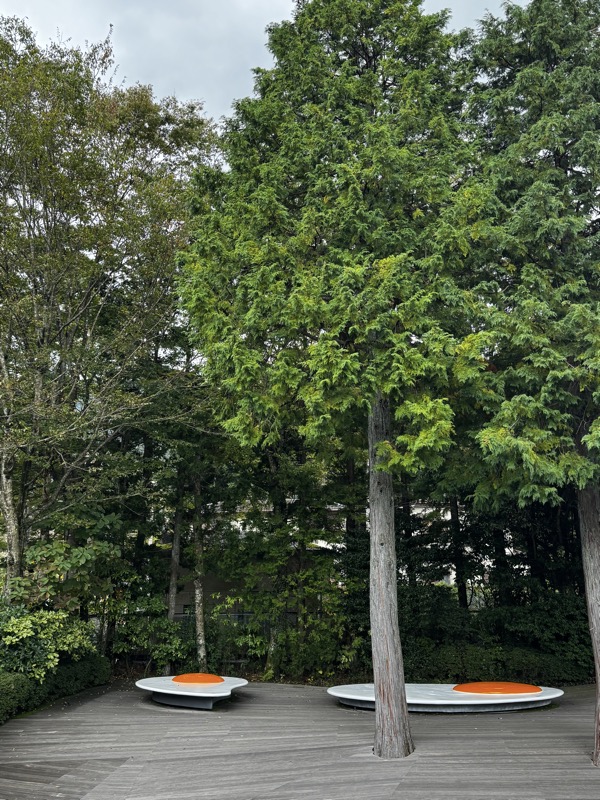
”A Grand Story” – Giuliano Vango (Italian), 2004, Carrara marble.
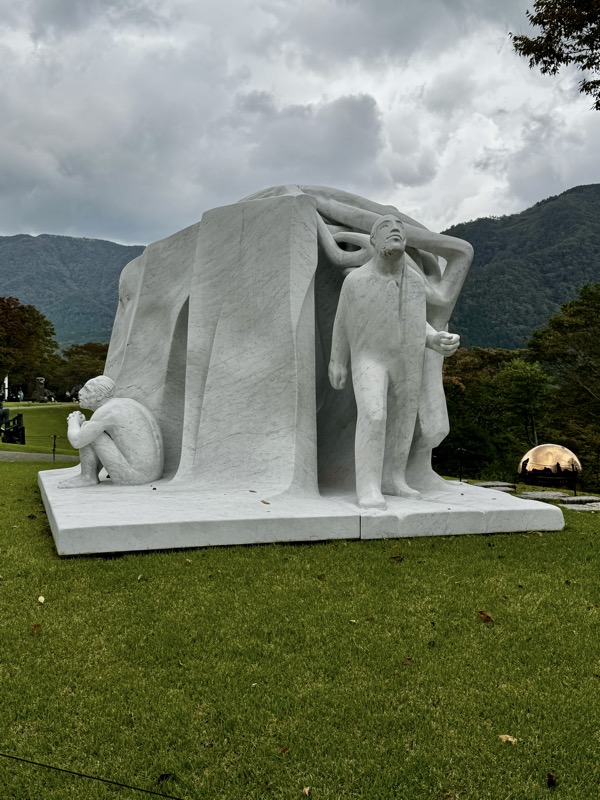

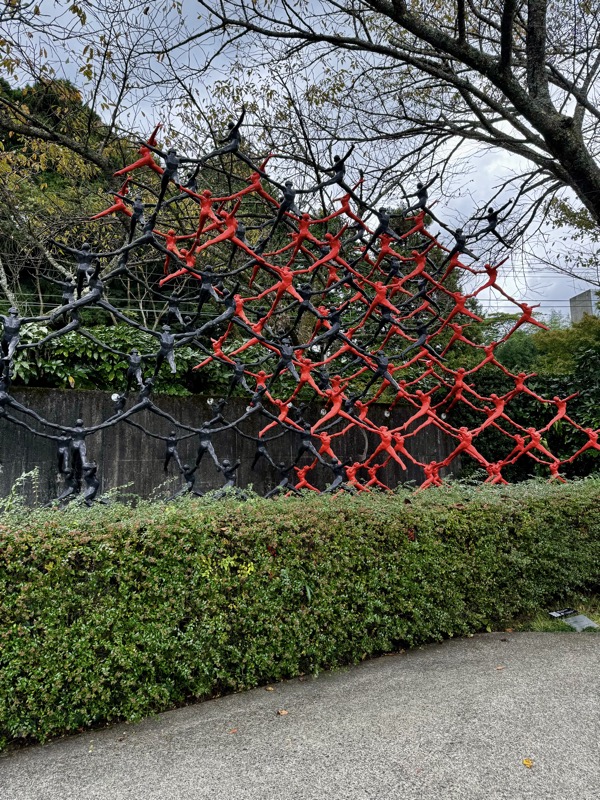
“Intersecting Space Construction” – Ryoji Goto (Japanese), 1978. FRP, iron and paint – inspired by wire mesh and in praise of human connections.

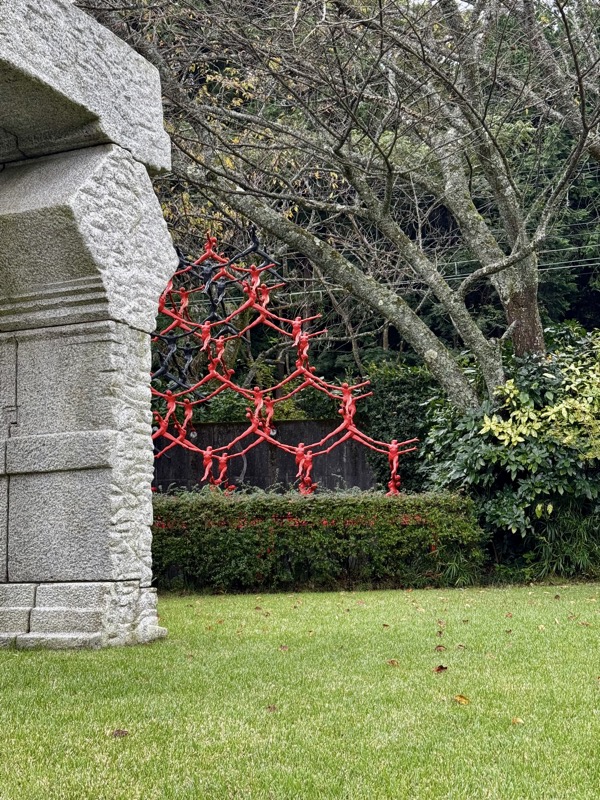

“Sturm (Storm)” – Matschinksy Denninghoff (German), 1980, stainless steel.
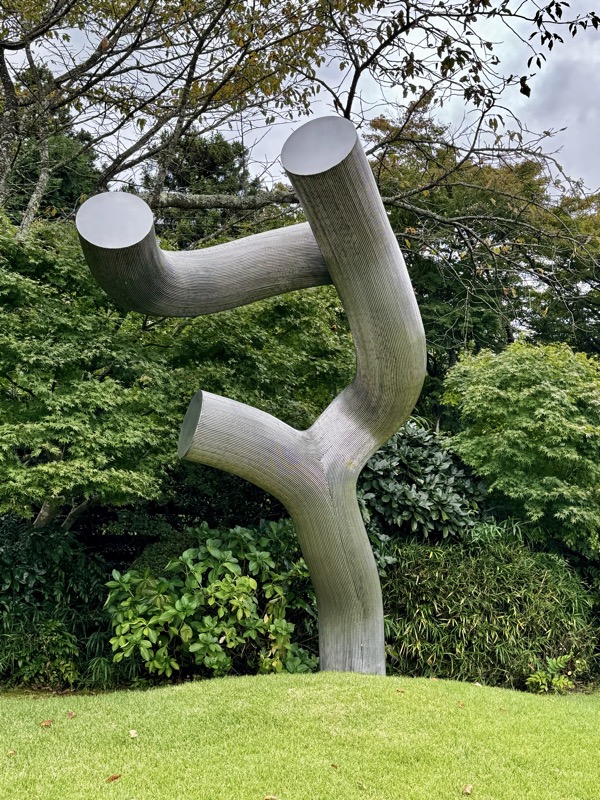
”Spatial Dynamics No. 22” – Nicholas Schöffer (Hungarian/French), 1954-1980, stainless steel.

”Arborescence” – Jean Dubuffet (French), 1971, epoxy resin and paint.

Hakone is lovely, and slightly odd… I look forward to coming back in a couple of weeks.
